FASTER AND MORE INTELLIGENT DATA

As the banks of data grow exponentially, cloud, access speed, artificial intelligence are rapidly converging.











As the banks of data grow exponentially, cloud, access speed, artificial intelligence are rapidly converging.









Cloud as a platform has benefits and limitations for data storage. The cost of moving large tranches of data into cloud storage for archiving and retrieval has not proved to be effective. Data remains grounded in multimedia type of on-premises archives to be managed by a variety of backup and restore applications.
Yet the benefits of data on the move, especially orchestration and sync with on-premises datacentres for global legacy enterprises and digital businesses is important. Vendors continue to struggle with various innovation cycles to integrate the power of cloud mobility into their data storage solutions.
In this month’s lead feature Pure Storage’s Geoff Greenlaw, describes his 4P approach towards revamping the vendor’s partner programme to bring channel partners much closer to the various data management related innovations taking place in the vendor’s products and solutions.
Pure Storage is a data storage solutions vendor that is integrating the ability to sync and orchestrate with cloud into its Evergreen, Flashblade, Portworx, Pure Fusion, and Pure1 solutions.
In our conversation style feature, Greenlaw describes his approach: where I have got to after all the conversations is what I am calling our foundational 4Ps. The days of selling an x86 server with some software are gone. And your business will probably not survive for much longer as we transition to cloud. I do feel that we need a breed of new partners, born in the cloud type partners.
In another part of the lead feature, we look at how Pure Storage is partnering with Meta and other OEMs, to build the world’s largest Artificial Intelligence Research SuperCluster.
Says Alex McMullan, Pure Storage’s CTO, the design points come to, can you fit this much capacity into this much physical space, and can you consume this much power while delivering enough bandwidth to feed and sustain all of those GPUs at once.
Another important Meta requirement was data security, and the extensive use of encryption, and ensuring that the transfer of data occurred end to end on a fully encrypted state. The privacy and the security requirements for that were quite onerous, says McMullan. Another key decision point was availability. Some of the machine learning jobs and some of the training models take weeks to complete and they cannot afford to have a pause, reset, restart in that timeframe.
Turn these pages for more including our on-site coverage of the CIO 200 roadshow UAE edition.
Happy business success at Gitex 2022 and look forward to engaging face to face with you. ë
ARUN SHANKAR, CHIEF EDITORARUN@GECMEDIAGROUP.COM
PUBLISHER
TUSHAR SAHOO
TUSHAR@GECMEDIAGROUP.COM
CHIEF EDITOR
ARUN SHANKAR
ARUN@GECMEDIAGROUP.COM
CEO RONAK SAMANTARAY

RONAK@GECMEDIAGROUP.COM
GLOBAL HEAD, CONTENT AND STRATEGIC ALLIANCES
ANUSHREE DIXIT
ANUSHREE@GECMEDIAGROUP.COM
GROUP SALES HEAD
RICHA S
RICHA@GECMEDIAGROUP.COM
PROJECT LEAD
GURLEEN ROOPRAI
GURLEEN@GECMEDIAGROUP.COM
JENNEFER LORRAINE MENDOZA
JENNEFER@GECMEDIAGROUP.COM
SALES AND ADVERTISING
RONAK SAMANTARAY
RONAK@GECMEDIAGROUP.COM
PH: + 971 555 120 490
DIGITAL TEAM
IT MANAGER
VIJAY BAKSHI
DIGITAL CONTENT LEAD DEEPIKA CHAUHAN
PRODUCTION, CIRCULATION, SUBSCRIPTIONS INFO@GECMEDIAGROUP.COM
CREATIVE LEAD
AJAY ARYA
GRAPHIC DESIGNER
RAHUL ARYA
DESIGNED BY
SUBSCRIPTIONS INFO@GECMEDIAGROUP.COM
PRINTED BY
Al Ghurair Printing & Publishing LLC. Masafi Compound, Satwa, P.O.Box: 5613, Dubai, UAE
Office No #115
First Floor , G2 Building
Dubai Production City
Dubai
United Arab Emirates
Phone : +971 4 564 8684
31 FOXTAIL LAN, MONMOUTH JUNCTION, NJ - 08852 UNITED STATES OF AMERICA
PHONE NO: + 1 732 794 5918
A PUBLICATION LICENSED BY International Media Production Zone, Dubai, UAE @copyright 2013 Accent Infomedia. All rights reserved. while the publishers have made every effort to ensure the accuracyof all information in this magazine, they will not be held responsible for any errors therein.












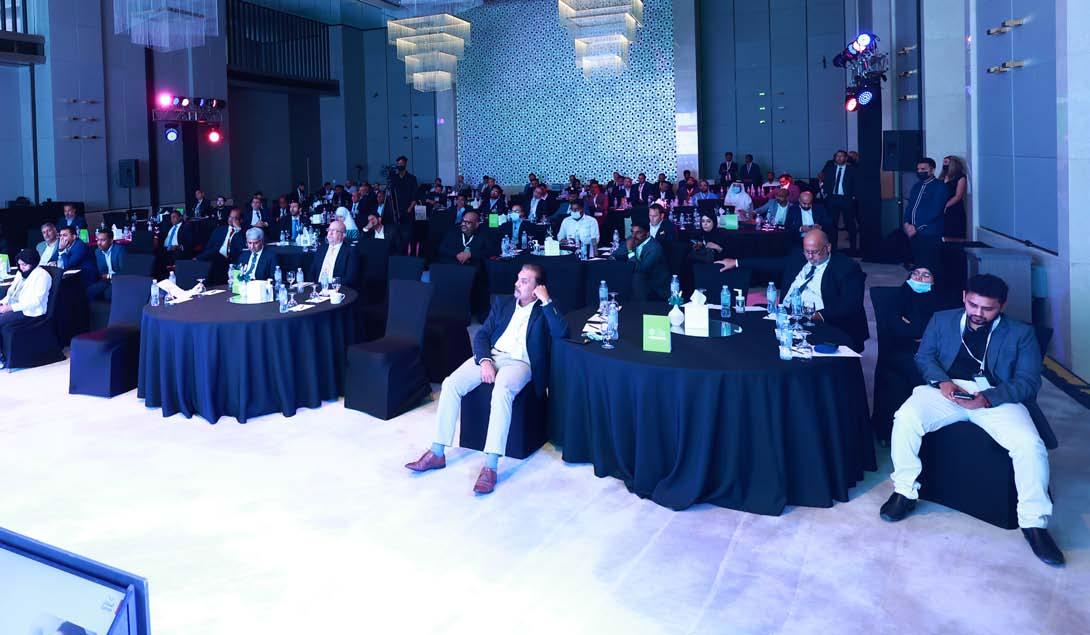

Prioritising high value digital transformation results, securing a bridge with finance, being proactive about digital talent, are some of the initiatives to ride out a recession.
Prior to the pandemic, digital transformation was a buzz word that made enterprises future ready. But the speed of adoption by enterprises remained variable and various models justified rapid, moderate or gradual pace of adoption. The arrival of the pandemic changed all that.
No longer was moderate or gradual pace of adoption an option. Rapid digital transformation became mandatory for survival and resilience of enterprises. No business could function with legacy systems anymore and tools to collaborate remote workers and cloud-based business applications were adopted in succession.
Today, post the pandemic the global business landscape is being impacted by multiple geopolitical factors, a conflict in the European theatre, multiple swings in the availability of commodities and a surge of inflationary pressure.
A triple whammy continues to challenge IT decision making. Stretched availability of digital and cyber security skills, disconnected global supply chains, backlog of semiconductor production, are all adding to the challenges of coping with a possible recession and impacting any feel-good corporate and business sentiment.
This is the time for IT decision makers to relook at their digital transformation roadmaps, review interrupted initiatives, review areas where gains have been made, and accelerate initiatives where gains can be reinvested into cyclic progress.
Any effort put into reviewing and accelerating digital transformation at this stage can only boost an enterprises market competitiveness and build resilience to ride out the recession.
The impact of these pressures on IT decision makers varies by industry and region. Waiting to see which way the tide moves is not an option and pressures are only likely to increase. It is important to review the annual spending plan, prioritising those initiatives that have the maximum impact on high value business results.
Identify looming inefficiencies and attempt to target additional costs reductions under the future digital transformation road map. Recognise the widening gap between the CFO and IT decision makers especially as external pressure builds up.
Digital transformation initiatives are likely to be interrupted if the gap widens between finance and technology. On the other hand, enterprisewide initiatives and gains are likely to be appreciated and supported rather than limited scale initiatives. It is imperative to keep the bridge secure between finance and IT through-out a recessionary phase.
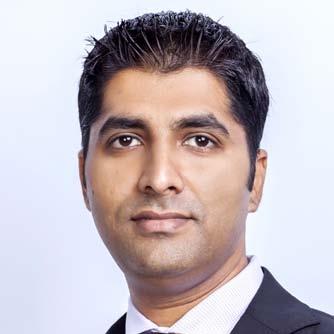
At this stage it is important to create more digital products and services that can boost customer and employee experience. Automation can help to improve productivity, reduce operating costs, and create opportunities for high-cost talent to be deployed in areas which give a better return on their costs. The focus of automation should be to permanently reduce operating costs of the enterprise. Cloud adoption should always remain a priority, which constantly reduces energy consumption inside the datacentre while creating agility and resilience for the enterprise. Relook at collaboration processes and workflows, constantly striving for improvement by making them faster and simpler.
Keep a trade-off list handy for resources and spending and keep reviewing the items on the list building justifications for top management approval and buy-in when it is required.
The discussion should always move towards demonstrating value gained for the overall organisation through spending on digital transformation. Spending must be preserved to ensure critical digital transformation initiatives move forward.
Recessionary forces can trigger the release of unforeseen talent into the market. Be prepared to snap up talent based on internal gaps and future requirements. In parallel relook at the utilisation of talent inside the enterprise by location; full time versus part-time; employed versus contracted. Enterprises must ensure they are in the right position to attract and retain the right digital talent.
Digital talent must be focussed on strategic initiatives such as reimagining customer and employee experience journeys today; predictive and autonomous digital projects; meeting expectations of customers a few years from now. Majority of boards believe improved customer loyalty should be a top outcome from a digital transformation journey.
With the arrival of new tools such as Metaverse, digital twins, and mixed reality experiences at scale, we might also be heading for a perfect shower of solutions to ride out a recession. Time will tell! ë
Proactively identify future risks to your organisation by informing decision makers about new security norms and technologies and monitor the workforce.
Midsize enterprise, CIOs responsible for security are up against the same complex threat landscape as their counterparts in larger organisations, but they are challenged to manage risk with fewer staff, limited security tools and smaller budgets. According to Gartner research, only 5% of an MSE’s IT spend was allocated to security in 2021.
Many of the security risks facing MSEs mirror those facing larger organisations. For example, attack surfaces are expanding due to increased use of cloud applications, open-source code, internet of things IoT and cyber-physical systems. This is creating a more complex organisational perimeter for MSE CIOs to secure.

Ransomware continues to be a top concern among MSE CIOs. It seems that on a weekly basis, we see reports of organisations having to halt operations due to ransomware. These organisations may not have robust incident response IR plans in place or IR services on retainer. Without rapid response, containment and remediation, ransomware can have a devastating impact on an MSE.
MSE CIOs cite security as the top technology skill gap in their organisations. In fact, most MSEs do not have dedicated cybersecurity personnel on their team. Gartner research shows that we do not see a dedicated security resource until there are at least 21 people in the IT group.
MSE security organisations are usually made up of IT generalists who take on security roles in addition to their other work. Even in cases where MSEs do have headcount for security, given the ongoing talent crisis, it can be extremely challenging to recruit and retain qualified staff.
To run a security operation centre 24x7x365, you must have a minimum of eight to 12 security analysts. This is not achievable for most MSEs. So, to be successful, MSEs need to adopt a security-talent-centric approach and implement role-based security, augmented by the use of third party partners.
Leveraging a managed security service provider MSSP, managed detection and response MDR, or an endpoint detection and response provider EDR can allow you to outsource resource-intensive monitoring. In most MSE environments, it is possible to contract a managed service provider for less than the cost of one senior, full-time equivalent.
Given this landscape, how can MSE CIOs be most effective?
You must be highly effective in your role to protect against expanding threats with limited resources. As MSEs’ digital ambitions grow, CIOs will find the size and scope of their roles increasing as well. Gone are the days
of only protecting servers and assessing IT risks.
Today’s MSE CIOs are responsible for not only thwarting unrelenting threats, but also addressing compliance within fast-changing regulatory landscapes, providing assurance about growing customer security concerns and more.
Gartner research has found that the most effective CIOs are skilled executive influencers, future risk managers and workforce architects. They actively develop their teams by focusing on diverse competencies and addressing talent gaps with non-security resources.
To improve your effectiveness, build strong relationships with senior leadership across the enterprise, particularly those outside of IT. Proactively identify and manage future risks to your organisation by informing decision makers about new security norms and technologies, and monitor the workforce and address skills gaps with creative talent management practices.
Finally, stress management and personal development play an important role. The most effective CIOs diligently manage their time by keeping firm work-life boundaries and making time for personal development. ë
MSE CIOs cite security as the top technology skill gap in their organisations
Strategically taking place before COP27, ADIPEC is the global platform for leaders to reinforce commitments that will drive the industry towards reducing emissions, meeting decarbonisation goals, and providing a realistic view on short- and long-term energy outlooks.

The long-term impacts of geopolitics on the global economy and energy industry
The road to COP27 and COP28
An industry transitioning: adapting to the new fundamentals of supply, low carbon and new energy solutions
and the energy transition: pioneering a new era of technology development
The new management agenda: future workforce and the leaders of tomorrow


The 40+ country roadshow, The World CIO 200 Summit 2022 started with the first event in Europe – covering the regions of Germany, Spain, Switzerland, Italy, Netherlands, and France on 11th August 2022 virtually. The event followed the theme of #Lead X –Leading through transformation, where we were joined by thought leaders from across the Europe region to share their transformative journey in the EU Region.
The event was hosted by Gurleen Kaur, Community and Commu-
nication Lead; who further ahead gave the stage to Ronak Samantaray, CEO and Co-Founder Global CIO Forum and Anushree Dixit, Global Content Head, Global CIO Forum. They shared the collective vision of Global CIO Forum as a platform of knowledge sharing and networking for the like-minded CIOs globally, with the audience.
To enlighten the audience with the on going of the IT Landscape and future of IT in the Europe region the summit was joined by the following esteemed speakers and a short summary:
Daniel Maestre Martinez, Head of IT Cash Germany and Asia; Prosegur Germany; spoke in depth about the “CIO Keys to Gain competitive advantage after the pandemic” The IT Industry and users have gone through immense change during and even beyond Pandemic, Daniel gave his expert advice to the audience on how to gauge through these times. With more process focused approach he Enlighted the audience about the working models and structural frame work along with technological and cultural transformation.
In the opening session, Enrico Maria Cestari, Chief Technology Officer, Jointly – Italy, shared his insights on Digital Transformation in current day and age.


He spoke about the common misconceptions surrounding it, the hurdles and collective business oriented outcome of digital transformation. He dug deeper into the concept of the continued distinction between Business and IT as a mindset and how the paradigm shift of “There is No US VS Them” will only accelerate the transformation in the organization.
Dr Thiago Felipe S. Avanci, Lawyer, Professor of Law, Board Member, CEST/POLI/USP; IGOAI; GAIEI; FISP. introduced the panelist for a fantastic knowledge fueled discussion around the most talked about topic of 2022: How Artificial Intelligence will Change the World. The panel powered by the IGOAI had the following names on board:
Dr Jamal Berrich Mohammed Professor and Memberof ‘Maison de l’intelligence artificielle’, Mohammed First University (Oujda); Dr Enrico Panai, AI Ethicist and Founder, Be Ethical; Dr Manal Jalloul Founder, AI Lab; Certified Instructor and University Ambassador, NVIDIA; Lecturer, American University of Beirut; Badr Boussabat, Co-Founder and President AI TOGETHER

Dr Milan Kumar, Chief Information Officer – Commercial Vehicles, ZF CV Systems Global GmbH-Switzerland; shared his expertise via the topic of “Leveraging Megatrends “Digitalization for Sustainability” in Smart Factory” Showcasing how big corporates are taking even bigger steps towards sustainable choices for a positive global impact. He spoke in depth about how “technology mobility trends are interlinked with sustainability”. Dr Milan, mentioned ZF’s ambitious climate strategy; including but not limited to ‘reducing CO2 emissions by 80% with the help of green power until 2030.’
The event concluded with the CIO200 EU Edition Awards in the Four award categories
Legend CIO, Leader CIO, Master CIO, and Next-generation CIO:
Legend CIO: Lifetime achievement awards.
Master CIO: Experience of more than 15-20 years and unparalleled technological experience in a career life span.
Leader: CIO: Experience of 10-15 years and multiple domain expertise.
Next-generation CIO: Experience of 5-10 years or less and undertaken mammoth projects in a less span of time.
Tobias Renk, CIO, Mobene Unternehmensgruppe
Enrico Maria Cestari, Chief Technology Officer, Jointly
Francesca Vergara Caffarelli, CIO, Esselunga
Daniel Maestre Martínez, Head of IT Cash Germany and ASIA; Prosegur Cash Services Gmbh
Dr Milan Kumar; Chief Information Officer –Commercial Vehicles, ZF CV Systems Global GmbH

Sergio Garcia, Global CIO, AENOR
Flavio Carvalho, CISO, Group Crédit Agricole
Leader
Master
Legend
Legend
Legend
Legend
Legend







The 40+ country roadshow, The World CIO 200 Summit 2022 successfully hosted the first physical event in Qatar at Grand Hyatt Doha Hotel, West Bay Lagoon, Doha, State of Qatar on 29 August 2022. The event featured three invited keynotes, two technology keynotes, panel discussion, CIO200 country edition award and networking with top IT executives from Qatar.
The World CIO 200 Summit 2022 Qatar event partners were Dell Technologies|Ingram, VAD Technologies|Pure Storage, Amstergi and Finesse. The summit built roadmaps for strategic decision making and identified yardsticks that are the key drivers of growth in the digital world. Welcoming the attendees for joining the first physical event of the road-
show, the event was inaugurated by Anushree Dixit, Global Head, Global CIO Forum. Setting the tone for the event, Anushree shared the CIO200 journey of the past years, BOTS platform and this years vision of Global CIO Forum. To enlighten the audience with the on going trends of the IT Landscape and the future of IT in the Qatar region a number of speakers and panelists joined the summit.
The World CIO 200 Summit Qatar edition felicitated 25 + CIOs and Industry leaders who have accelerated digital and business transformation and created a better future for their business. The event concluded with the CIO 200 Qatar Edition Awards in the three award categories Legend CIO, Leader CIO, and Master CIO.
Panel discussion on Rewriting the Digital and Business Transformation Strategy with Futuristic technologies and Forward-looking business roadmap. The moderator was Satyanarayan Banjapall and panellists included Chander Mohan Raina, Peter Okorn, Shanib Shamsudheen, and Faizal Babu Kavungal.
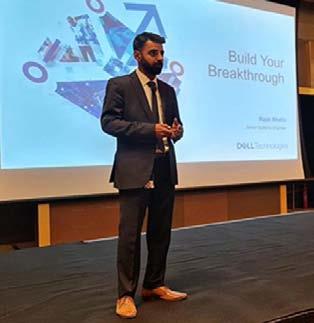
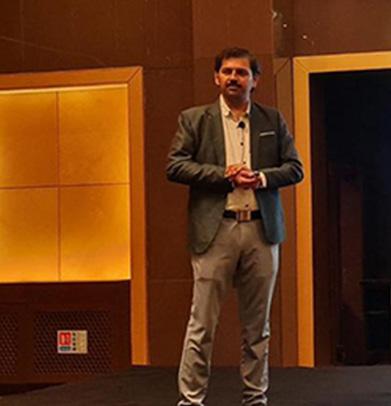

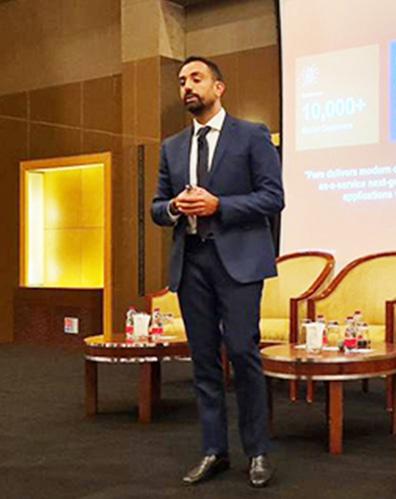
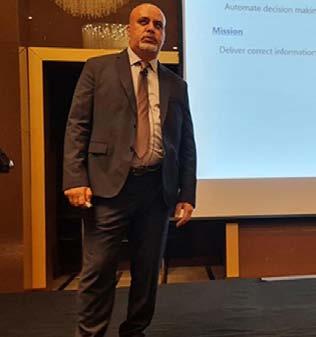
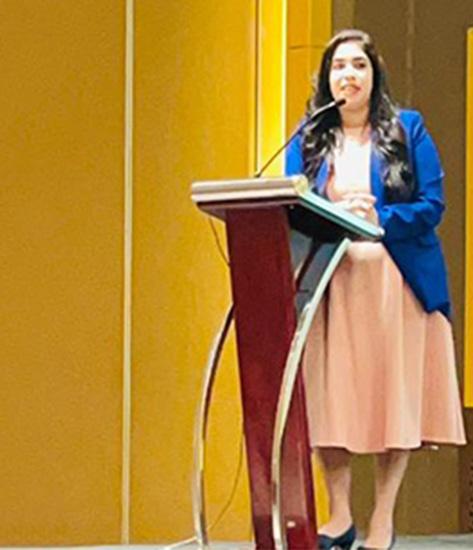

Legend CIO: Lifetime achievement awards
Master CIO: Experience of more than 15-20 years and unparalleled technological experience in a career life span.
Leader CIO: Experience of 10-15 years and multiple domain expertise.
Nagireddy Bommareddy Leader
Mohammed Al-Kuwari Leader
M.G. Amila Gayan Master
Pasantha Walpola Master
Anto Pius Master
Toni Elias Master
Nizar Radad Master
Fateh Abu Hijleh Master
Jasim Abdul Rahiman Master
Mohammed Jamous Master
Mohammad Zaid Alkilani Master
Hamdan Merchant Master
Samir Pawaskar Legend
Chander Mohan Raina Legend
Faizal Babu Kavungal Legend
Dharmapal Wankhede Legend
Saheem Mohammed Ibrahim Legend
Hamad Suwaid Legend
Satyanarayan Banjapally Legend
Kashif Fateh Dad Legend
Ali Awkal Legend
Ghazwan Alwahaib Legend
Magdy Ahmed Legend
Najmul Haque Legend
Mohammed Nayeem Kundapur Legend
Rajesh Chandramohan Legend


The World CIO 200 Summit 2022 UAE edition was completed on 15 September in Dubai. The in-person event was joined by 150+ attendees, 20+ speakers and panelists and 100+ award winners. The sponsor partners included Dell Technologies | Mindware; Infinite Blue; Zero&One; VAD | Pure Storage; Commvault; Spire; Darwinbox; Cloud Box; Young Arab Leaders; SCLG; Finesse; Teksalah; Cyvo.io and HPE | Emitac and Alteryx.
Hosted by Ujjwal Khanna, the UAE edition was opened by Ronak
Samantaray, CEO and Co-Founder, GEC Media Group with a warm welcome to all the attendees and guests. Anushree Dixit, Global Head Content and Strategic Alliances, thanked all the keynote speakers and guests for joining the event in-person.


This year, the roadshow will cover 40+ countries; virtually and physically; and provide a knowledge-sharing and networking platform for partners, speakers, exhibitors, attendees, and guests with 500+ engaging sessions.
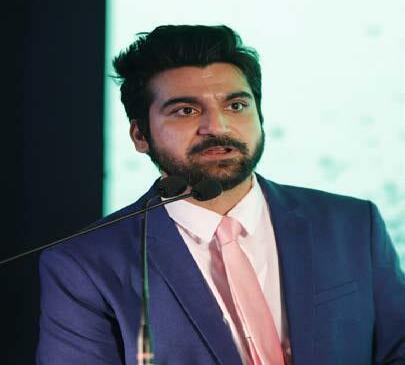 Ujjwal Khanna, Event Host.
Ronak Samantaray, CEO and Co-Founder, GEC Media Group.
Ujjwal Khanna, Event Host.
Ronak Samantaray, CEO and Co-Founder, GEC Media Group.
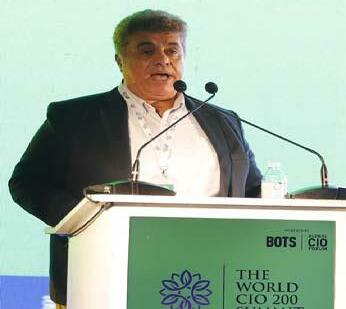


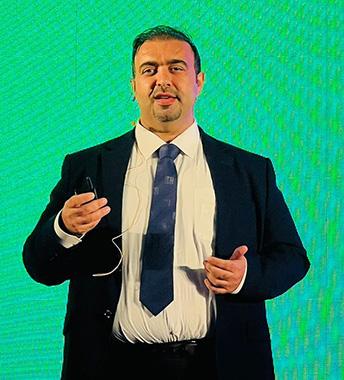
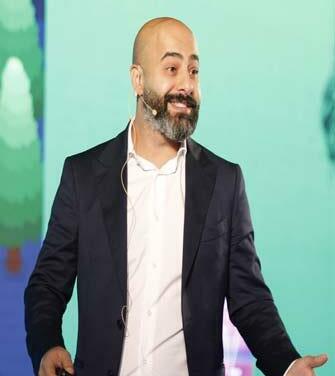


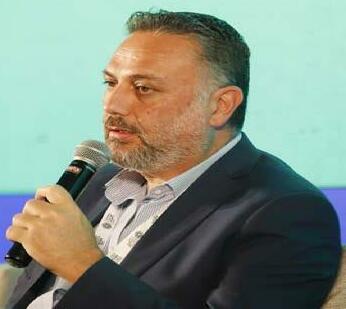


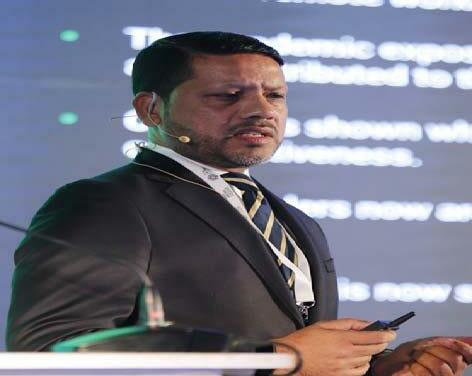
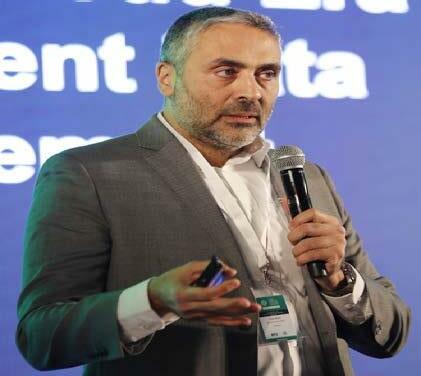




Next-generation CIO: Experience of 5-10 years or less and undertaken mammoth projects in a less span of time.
Leader CIO: Experience of 10-15 years and multiple domain expertise.
Master CIO: Experience of more than 15-20 years and unparalleled technological experience in a career life span.
Legend CIO: Lifetime achievement award
l The World CIO 200 Summit 2022 Next-generation CIO Award winners include Mohit Duggar; Sergio Antelo and Sabin Subramannian
l The World CIO 200 Summit 2022 Leader CIO Award winners include Bader Zyoud; Mustafa Osrof; Rabih Merhy; Muhamed Noufel; Sheridan Moodley; Amna Al Dhaheri; Pragnesh Menon; Shrenik Jain; Peter Gesper; Mudassar Ali; and Huda Khamis Alghafri.
l The World CIO 200 Summit 2022 Master CIO Award winners include Abdalla Al Ali; Gigi Mathew Thomas; Fahad Deshmukh; Fady Sleiman; Shijin Prasad; Qusai Almeqdadi; Shahrin Oli Mohamed ; Nithin Geo Thomas; Rakesh Narang; Arul Jose Vigin; Hemanth Shetty; Akash Lall, Ayman Medaka; Ken Maas; Madan Mohan; Yahyah Pandor, Deepu George Thanikkal; Eyad Kashkash; Abdul Hameed; Adam Docrat; Shanu Ammunni; Abideen Sulaiman; Muneer Abdurahman; Samit Jha; Yousif Odeh; Kajjal Mustafi; Faisil Syed; Nader Ayoub; Himanshu Puri; Stacy Samuel; Mohammad Shahzad; Hussain Saifuddin; and Ahmed Shawky.
l The World CIO 200 Summit 2022 Legend CIO Award winners include George Akhras; Martin Wallgren; Jacob Mathew; Aliasgar Bohari; Venkatesh Mahadevan; Mario Foster; Veneeth Purushotaman; Soheyl Kadjani; Jayesh Maganlal; Ali Ghunaim; Mamoun Alhomssey; Kashif Rana; Manish Bindra; Riasat Ali ; Neale Croutear-Foy; Anindo Banerjee; Mubarik Hussain; Santosh Shetty; Ahmad Yahya; Frederik Bisbjerg; Nicholas Charnley; Shrikant Kabboor; Mohamed Arief; Najim Tayib; Mohamed Taleb; Jaleel Rahiman; Anand Krishnan; Vikalp Shrivastava; Shumon Zaman, Shailesh Mani; Mustansir Aziz; Ahmed Al Marzooqi; Fayaz Ahamed Badubhai; Srinivasa Narasimhaiah; Sreedhar Suragouni; Ahmed Al Madani; Pradeep Nair; Aditya Kaushik; Ronald Dsa; Karthikeyan Gurusamy; Roger Tabbal; Jayakumar Mohanachandran; Joseph Aninias; Francis Arul; Umesh Moolchandani; Vinay Sharma; Sunil Nair; Rawad Bader; Farid Farouq; Sebastian T. Samuel; Abid Hussain Shah; Aiman Othman; Vincenzo Picciuolo; Santhosh John Thomas; and Krishnan Gopi.

GOLD
SILVER PARTNER
AWARD PARTNER


ORGANIZED BY
SUPPORTING PARTNERS
MEDIA PARTNERS
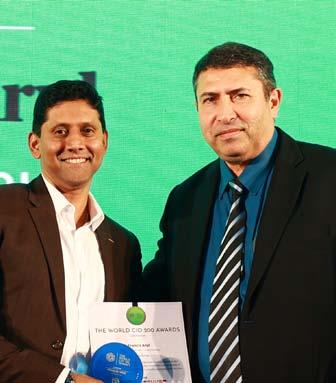


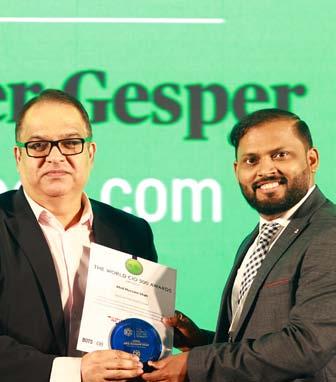

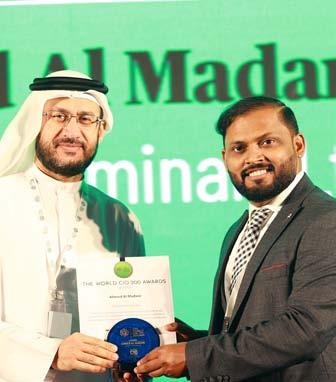


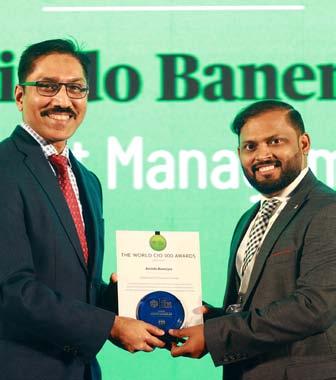

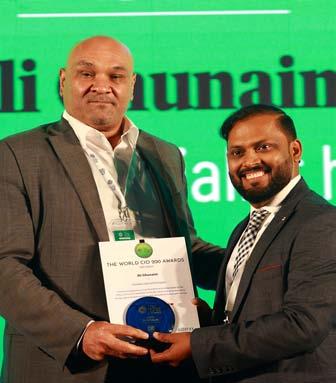

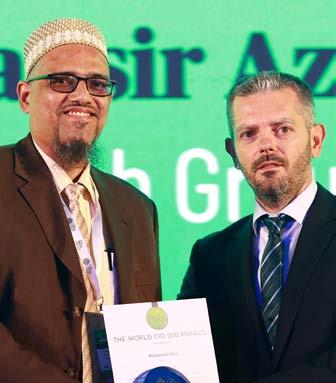

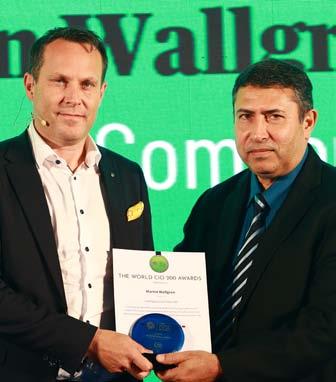


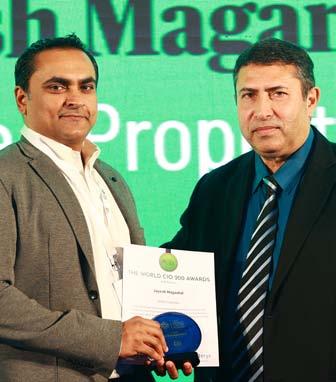


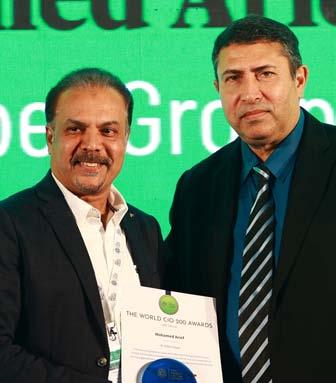
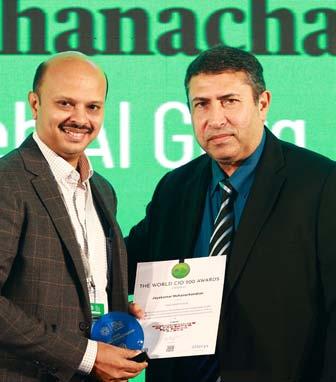
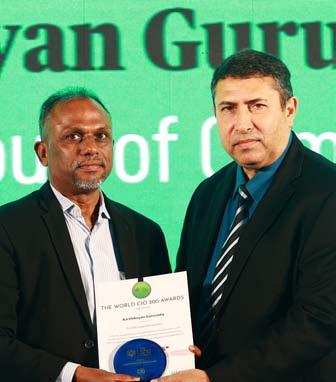
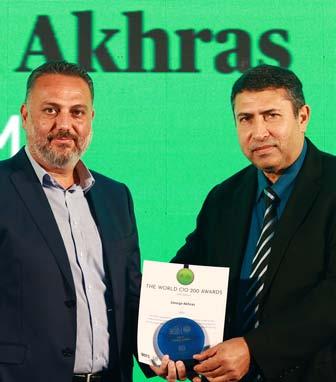

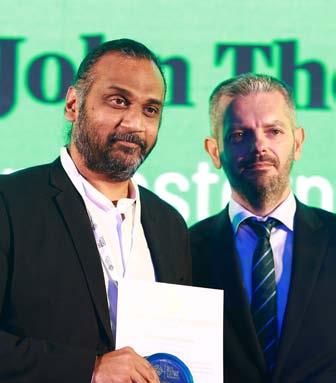
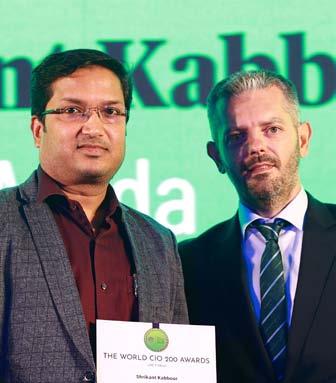

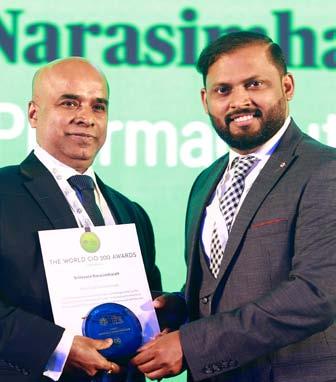
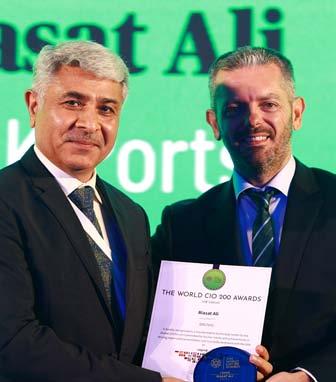
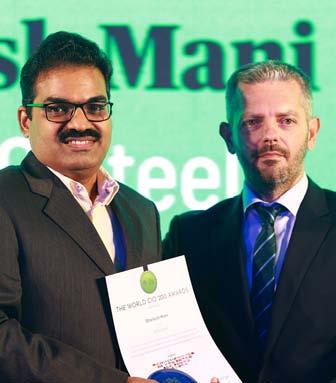
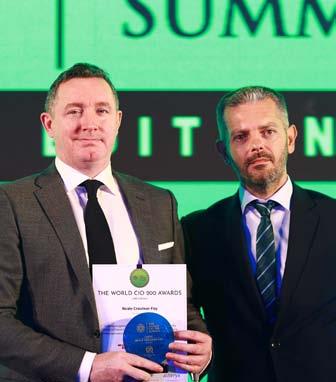

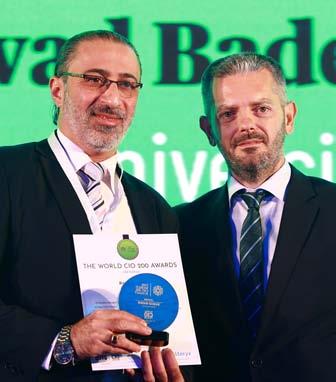
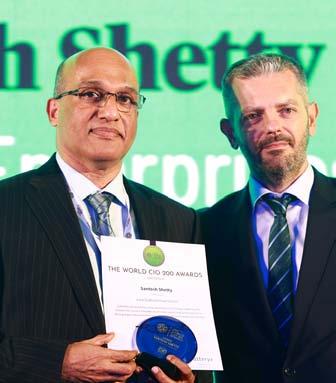
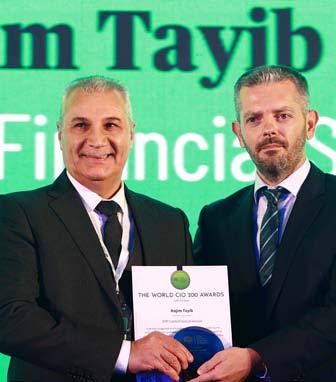


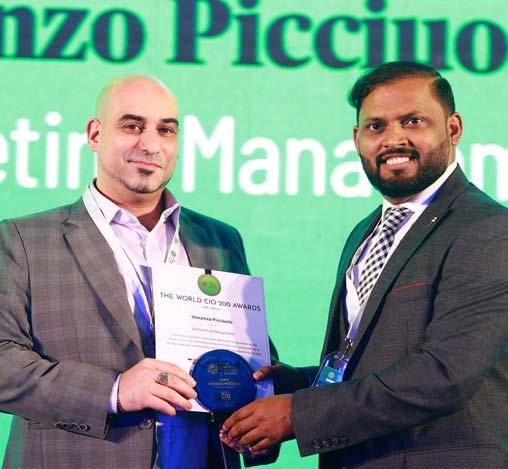

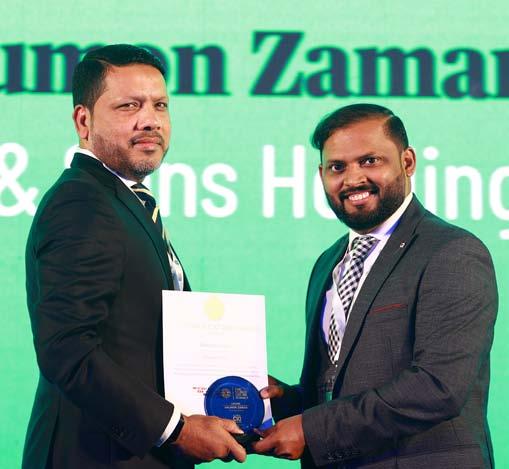

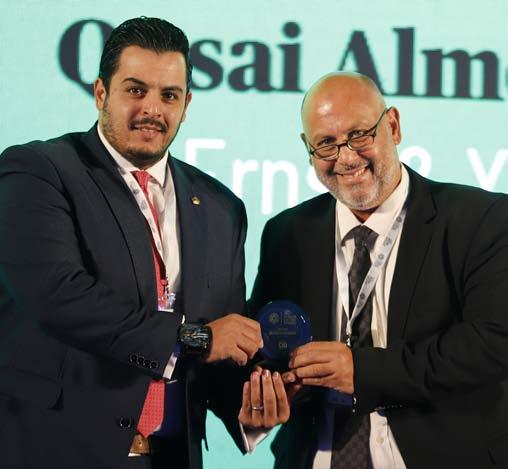


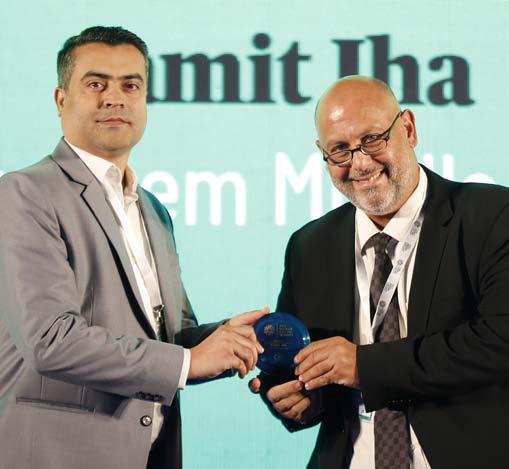
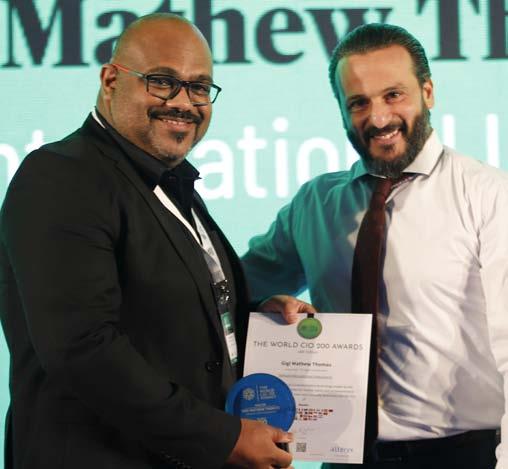
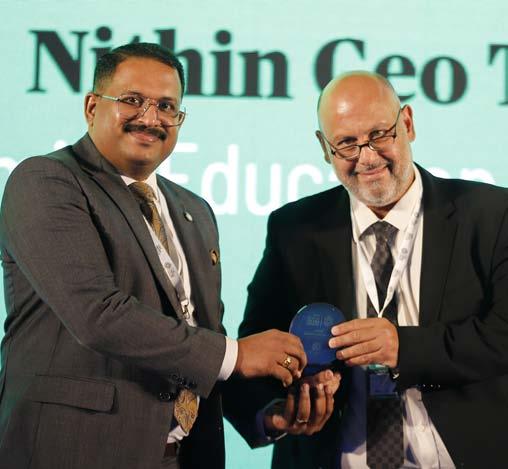
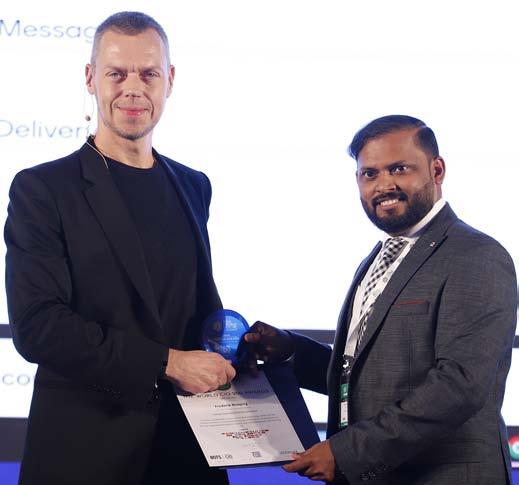
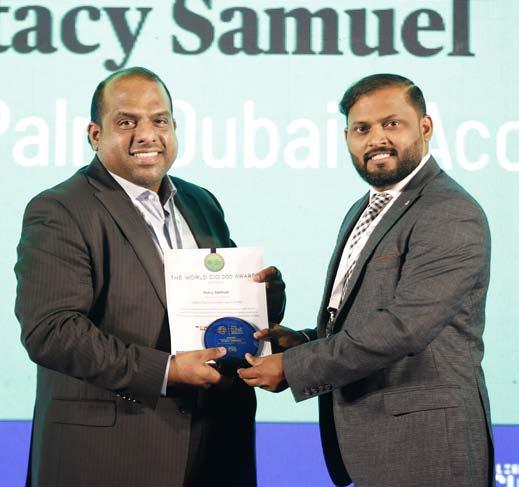


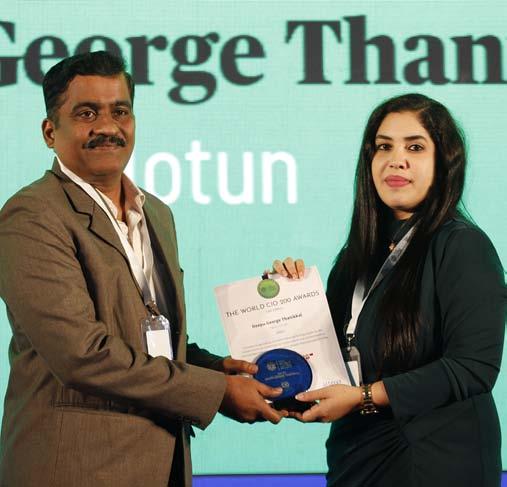
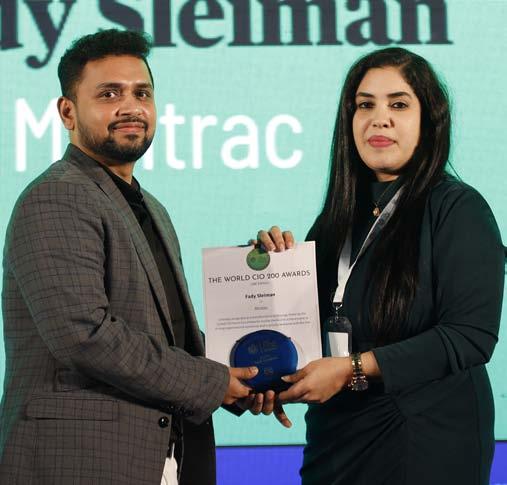

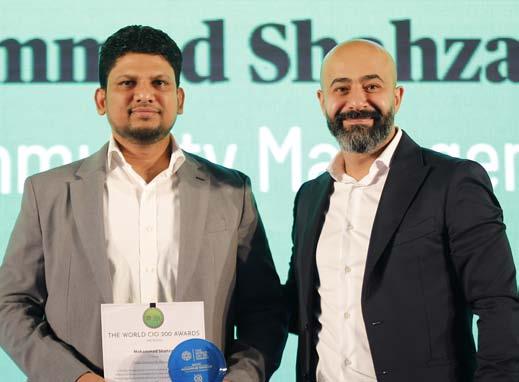
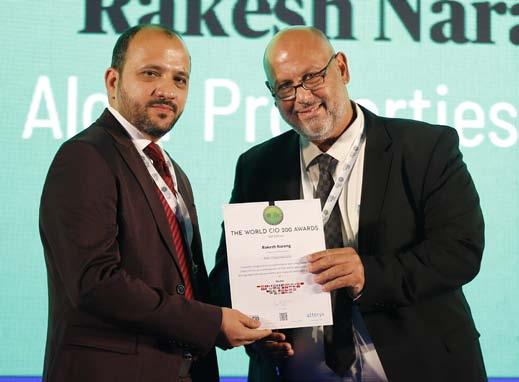

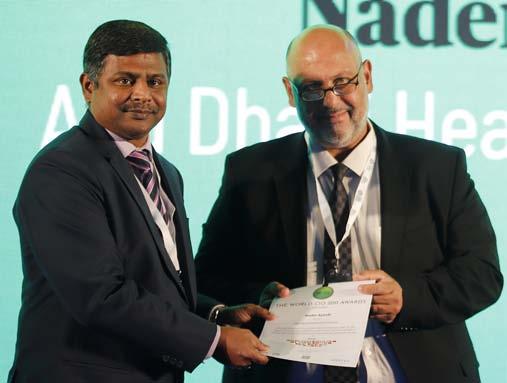

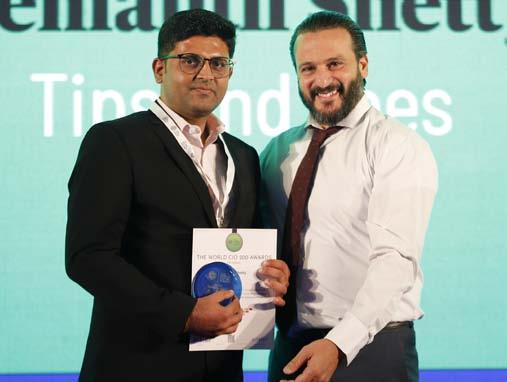

As the banks of data grow exponentially, cloud, access speed, artificial intelligence are rapidly converging.

Successful enterprises tend to grow their businesses over time. As new workloads are added and their data grows, their storage performance and capacity requirements grow.
A typical legacy enterprise storage platform’s life cycle varies but is generally somewhere in the range of three to five years. Ultimately, the fixed storage performance of this legacy system no longer meets requirements, and the business is forced to perform a forklift upgrade to gain access to the newer technologies in controllers and storage media necessary to meet its requirement most cost effectively.
Purchasers of enterprise storage have historically dealt with an upgrade cycle that was expensive, disruptive, inherently risky, time consuming, and strongly driven by vendors’ technology refresh cycles and pricing.
The legacy enterprise storage upgrade cycle is familiar to most storage administrators. An enterprise purchases a new storage array, which includes a given storage capacity that may be expanded over the life of the product, but the maximum storage performance achievable by the system is fixed based on the capabilities of the controllers and the internal array bandwidth at the time the product is shipped. Regardless of how much capacity may be added over time, the maximum performance potential in terms of storage latency, throughput, and bandwidth does not increase.
Even if a business is not outgrowing the performance of its storage, media density, power consumption, and maintenance costs on older products may become sufficiently onerous to also drive a company to want to upgrade to newer technology. This cycle repeats over time.
The model locks customers into older technology. When a legacy enterprise storage array is developed, it can be designed to include the latest in controller, backplane, and storage media technology. Firmware and software upgrades over the life cycle of the product can provide incremental performance improvements, but customers are locked into the limitations of that technology as originally designed for the life of the product.
For example, much newer higher-performance and more efficient NVMe technologies cannot be most effectively used in legacy systems designed around SCSI.
Although capacity can be added, often all drives can be only of the type available when the system was first purchased. Customers do not necessarily have access to major advancements that provide order of magnitude improvements in performance, storage density, and cost.
Forklift upgrades are disruptive. Moving to the next generation in controller, backplane, and storage media technology requires a completely redesigned array with typically much higher internal bandwidth to take full advantage of performance and density advancements in storagerelated technologies. This means that a completely new array must be brought in to replace the existing array, and that often means downtime as well as data migration.
Application and data migration is time consuming and risky. During the upgrade, all the applications and data in the old array must be migrated to the new array. Today, even the smallest enterprises are dealing with at least tens of terabytes of data, and most are dealing with hundreds of terabytes and looking at managing petabytes of data soon if they are not already doing so. Even if data is migrated over high-performance networks such as Fibre Channel, migrating that much data can easily take days if not weeks or months for many enterprises.
Customers may also have extensive snapshot trees and replica libraries that will be lost if they cannot be migrated to the new system. Often, newer systems use a new higher-performance or more efficient on-disk format, so customers can incur conversion risk during the migration as well.
Upgrades are extremely costly. A customer must buy the new hardware and any required software as well as rebuy capacity. Generally, none of the hardware and software from the older array can be transferred to the new array, so all of the capital expenditure capex must be repeated even if the customer wants just the same basic features x amount of capacity, snapshot, and replication software.
And then, to help this inherently risky process go more smoothly, many enterprises hire outside professional services firms to plan and execute the technology refresh, a decision that can easily add tens of thousands
Customers are locked into the limitations of that technology
of dollars in services cost to what is already considerable capital expense. Delaying upgrades may be even more costly. As legacy systems near their performance thresholds, it becomes relatively more expensive to increase performance further.
More older technology resources are required to meet increased requirements, relative to denser and higher-performance newer technology options. Added older technology resources can bring lower performance and capacity density, making it relatively more expensive to scale

system capabilities with them more devices are needed, which consume more energy and floor space. Maintenance costs also often increase on older systems, providing an additional vendor-driven incentive for customers to look at upgrading to newer technology.
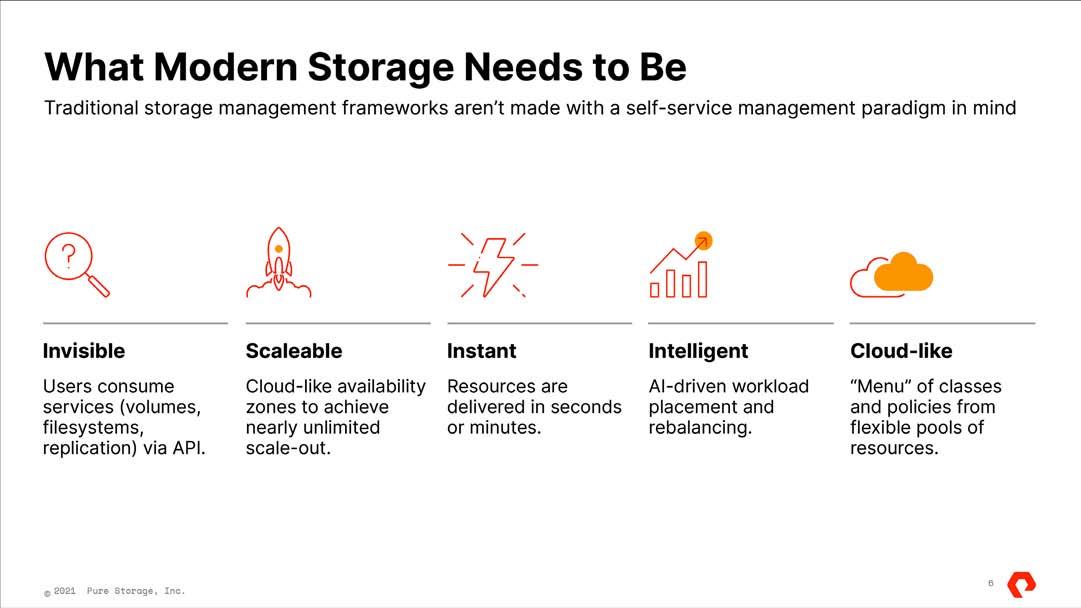
Pure Storage has been working with Meta since 2017 but building its Research SuperCluster required meeting parameters of highest scale and efficiency.

Meta has designed and built the AI Research SuperCluster, which is among the fastest running and will be the fastest AI supercomputer in the world when it is fully built out in mid-2022. Meta researchers are using Research SuperCluster to train large models in natural language processing, NLP and computer vision for research, with the aim of one day training models with trillions of parameters.
Research SuperCluster will help Meta’s AI researchers build new and better AI models that can learn from trillions of examples. Meta has been committed to long-term investment in AI since 2013, when Meta created the Facebook AI Research lab. High-performance computing infrastructure is a critical component in training such large models, and Meta’s AI research team has been building these high-powered systems for many years.
Pure Storage has been working with the Meta team since 2017 and that
was the initial deployment of the FlashBlade technology. Since that time Pure Storage has been developing stronger engineering links with Meta. The Meta team chose to go with Pure Storage because the vendor was able to demonstrate years of working together successfully. This was not just on the engineering side, but also on the support and the professional services and all the other relationships that go with that when you build a system of that scale. Pure Storage already had that advantage of being the incumbent and having demonstrated those capabilities.
Since 2020 Pure Storage has been working with Meta to develop the Research SuperCluster, which is a partnership primarily between Pure Storage, NVIDIA, Penguin.
The aim of Research SuperCluster is to become the world’s largest AI computer over time and to help the Meta scientists work on some of the more challenging problems they have around computer vision, language processing, and a mixture of other technologies that are being used more widely in learning systems and intelligent systems today.
The way machine learning technology works in general is that the
Another key decision point was availability. Some of the machine learning jobs and some of the training models take weeks to complete and they cannot afford to have a pause, reset, restart in that timeframe.
larger the system is, the more powerful it becomes. And dividing up into smaller segments is perhaps less appealing to scientists unless they are working on a smaller training model.
The power of the system becomes much more strategically capable once all of the NVIGIA GPUs are used against a single model that has been trained and developed with enough calibration points. The bigger problems are the ones that the Meta team hopes to solve with the Research SuperCluster rather than specific and smaller ones.
The project to build, create, deploy the system itself is fascinating from a number of different dimensions. Meta already had a datacentre built for exactly this purpose. So Pure Storage knew that fitting into the constraints of physical space as well as power density, floor space, tile space, were already set in stone, and could not be changed.
What Pure Storage essentially ended up with was the decision to build a scalable, repeatable system that could be expanded in exactly the same way as the initial deployment. Building from an initial 250PB of capacity with six or 7,000 of NVIDIA A 100 GPUs and then repeating that in the same facility by expanding the capability.
So the requirement was designing for scale, designing for resilience, as well as making sure that everything fits within the metrics of traditional datacentre requirements in terms of power, space, cooling, density. But also leaving room to grow.
The ambition is to reach an Exabyte of model data, but also to get up towards 16,000 NVIDIA GPUs in this system as well. All of which
drives specific requirements on the storage side in particular for the density and the actual bandwidth density, performance density and power density. Pure Storage had very lengthy discussions with the Meta team in terms of fulfilling those requirements.
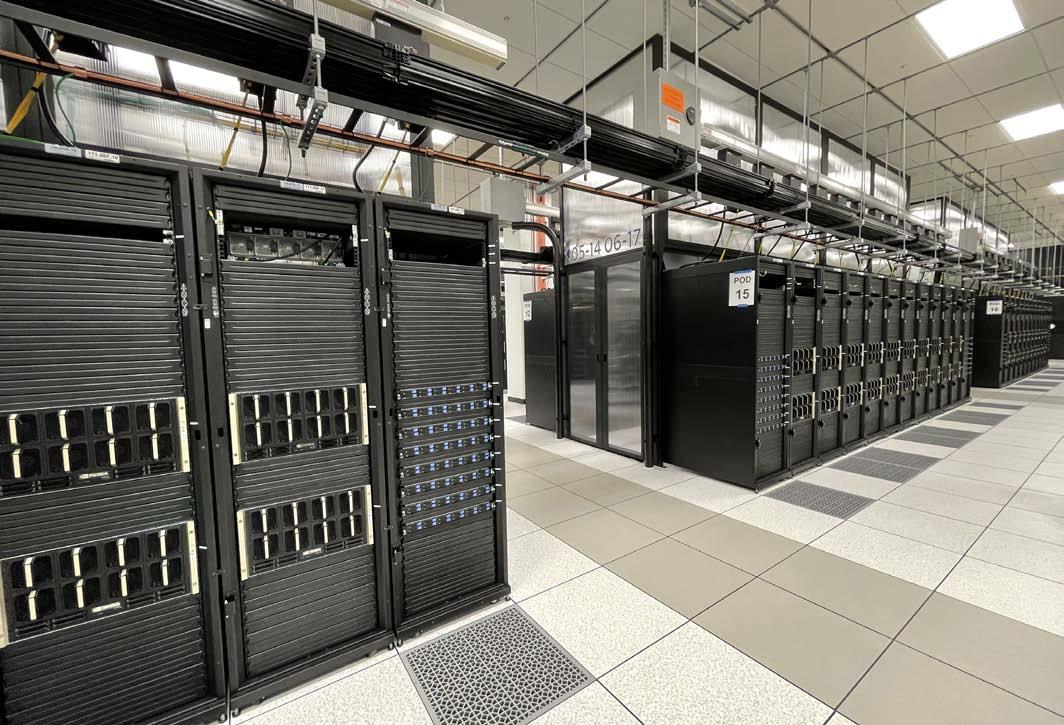
“The Meta team had produced comprehensive specifications for all of the parameters that Pure Storage had to reach,” points out Alex McMullan, CTO International, Pure Storage.
The real design points came to, can you fit this much capacity into this much physical space, and can you consume this much power while delivering enough bandwidth to feed and sustain all of those GPUs at once. And that was a pretty big design point for Pure Storage. The vendor did have to make some enhancements to its software to help the Meta team reach those goals.
Pure Storage is well known for elimination of complexity. However, the project was unprecedented is terms of scale of deployment in a single datacentre in a very short period of time. Pure Storage wanted to make sure that this could be done quickly and easily with almost a plug and play type approach for the storage deployments themselves.
“Thinking about all these traditional deployment requirements, and also some of the non-functional requirements that sat around that as well, were part of the major success keys here in the go live,” says McMullan.
One of the important Meta requirements was data security, and the extensive use of encryption, and ensuring that the transfer of data occurred end to end on a fully encrypted state. The privacy and the security requirements for that were quite onerous, indicates McMullan. Pure Storage wanted to make sure they were comprehensively capable
The real design points came to, can you fit this much capacity into this much physical space, and can you consume this much power while delivering enough bandwidth to feed and sustain all of those GPUs at once.
of meeting all of those security requirements.
“Those were the big focus for the Meta team in terms of, yes making it more secure but also making it easy to deploy on day one and continue doing so,” says McMullan. “Manageability wise, those are all pretty much standard that we have today, while making it a plug and play kind of capability for deployment.”
Another key decision point was availability. Some of the machine learning jobs and some of the training models take weeks to complete and they cannot afford to have a pause, reset, restart in that timeframe. So the physical uptime of not just the storage hardware, also the networking, the compute layers, the cache layers were all carefully considered in the Meta design. Meta was comfortable with the capabilities, resilience and uptime from Pure Storage.
Research SuperCluster is essentially research and a learning system. It is there to help the metadata scientists and software development teams learn about behaviours and how they can actually make their own technology better.
One of the big focuses for Meta is natural language processing, which is really aimed at things like voice assistance and being able to have a conversation with an AI machine on your phone or in your car. Those are the things Meta is trying to get better at.
In terms of the data set, the Meta ecosystem is huge, spanning all the way from Facebook application through WhatsApp and Instagram, and a whole range of others that are much more popular.
All of that data remains strongly encrypted and protected end to end in the system as part of the key design of Research SuperCluster itself. This is the way Meta learns and develops and enhances its tool sets.
According to McMullan, the lessons Pure Storage will learn at Meta, will be those of scale and automation. It will be the single biggest deployment of Pure Storage in a single datacentre in terms of physical chip density. Research SuperCluster gives Pure Storage a huge data set in terms of looking at how a single collection of machines behaves over time. How the various environments affect the performance, resilience, from everything in terms of chip health all the way through to power supply status. For Pure Storage this is very useful in terms of a field study of a large deployment in a single space. “That gives our engineers a lot more data points to work through,” says McMullan.
Power density capability, datacentre efficiency, are some of the most important metrics at Meta’s Research SuperCluster. And energy consumption power drain is a huge focus for Pure Storage. Power consumption and power efficiency are two operations Pure Storage

One of the important Meta requirements was data security and extensive use of encryption
looks at most carefully in its systems design. It was one of the major metrics Meta gave to Pure Storage to be able to meet. “Those kinds of metrics are becoming increasingly important,” points out McMullan.
“We do not assume that all of the other phases at Meta will come with us immediately. Pure Storage wants to just continue to earn that business,” he indicates.
For energy consumption, Pure Storage quotes the highest power levels. But power draw of storage technology in particular, will fluctuate lower than that over time. Pure Storage is working on giving customers a live view of their power consumption.

There is also a trend, according to McMullan, from Pure Storage customers to select power consumption metrics rather than performance metrics, to define a workload. And that is an interesting development that Pure Storage is looking at.
“Energy monitoring has become much more of a forefront discussion over the last couple of years. That is a great thing honestly, because it holds us as vendors to account to make sure that our systems are just as sustainable and as efficient as all the other systems we use around us today,” points out McMullan, about the innovations that lie ahead. ë
In early 2020, Meta decided the best way to accelerate progress was to design a new computing infrastructure from a clean slate to take advantage of new GPU and network fabric technology. Meta wanted this infrastructure to be able to train models with more than a trillion parameters on data sets as large as an Exabyte — which, to provide a sense of scale, is the equivalent of 36,000 years of high-quality video. The first generation of this infrastructure, designed in 2017, has 22,000 NVIDIA V100 Tensor Core GPUs in a single cluster that performs 35,000 training jobs a day. Up until now, this infrastructure has set the bar for Meta’s researchers in terms of its performance, reliability, and productivity.
AI supercomputers are built by combining multiple GPUs into compute nodes, which are then connected by a highperformance network fabric to allow fast communication between those GPUs. Research SuperCluster today comprises a total of 760 NVIDIA DGX A100 systems as its compute nodes, for a total of 6,080 GPUs — with each A100 GPU being more powerful than the V100 used in Meta previous system.
Each DGX communicates via an NVIDIA Quantum 1600 Gbps InfiniBand two-level Clos fabric. Research SuperCluster’s storage tier has 175 Petabytes of Pure Storage FlashArray, 46 Petabytes of cache storage in Penguin Computing Altus systems, and 10 Petabytes of Pure Storage FlashBlade. When Research SuperCluster is complete, the InfiniBand network fabric will connect 16,000 GPUs as endpoints, making it one of the largest such networks deployed to date. Additionally, Meta designed a caching and storage system that can serve 16 TBps of training data, and Meta plans to scale it up to 1 Exabyte.
A big part of achieving this was in working with a number of long-time partners, all of whom also helped design the first generation of Meta AI infrastructure in 2017. Penguin Computing, an SGH company, Meta’ architecture and managed services partner, worked with Meta operations team on hardware integration to deploy the cluster and helped set up major parts of the control plane.
Pure Storage provided robust and scalable storage solution. And NVIDIA provided its AI computing technologies featuring cutting-edge systems, GPUs, and InfiniBand fabric, and software stack components like NCCL for the cluster.
With the speed of product and platform innovation happening at Pure Storage, channel partners may be lagging in sell through and sell out opportunities. In conversation, Pure Storage’s Geoff Greenlaw explains a 4P revamp approach.
For the past six years I have been working in the channel organisation, both at Veritas and now with Pure Storage. The first observation at Pure Storage after joining is that I really want to put a brand and identity on the map for the channel community. That’s what I have set out to do in my first 90 days of tenure here. Where I have got to after all the conversations is really what I am calling our foundational 4Ps. These are partnerships, programme, process and people.
What are we doing around portfolio selling, how are we attacking the Evergreen transition to subscription. So if I start with partnerships, that is the core foundation of everything that we do and the task that I am setting for the team in that context is really around How do we build scale and reach?
The Pure Storage partner ecosystem that have got us to where we are today, is well documented and we had great 50% YoY in the prior fiscal quarter. We are going through a phenomenal growth as a business. But we need to build scale and reach in order to continue on that growth curve that we are on as a business.
When we talk about building scale and reach, we need to have an aligned coverage model. We have our direct sales executives who engage with customers, and we have our channel who have relationships with those end-user customers as well. So it is imperative that we are aligned on that coverage model through distribution, resellers, alliances, GSIs and MSPs as just some examples.
The primary goal of these partnerships in building scale and reach, is to build an incremental new pipeline together. If we do nothing else, that is
the core raison d’être for us .
And part of that is really accelerating this transition to subscription with Evergreen. And we are seeing a big uptick in the channel organisation around how we are doing that. The concept of embracing the partner ecosystem is to give a force multiplier in the region across EMEA. So that is partnership number one.
Everything that we do is 100% indirect through channel. The way that we transact our business is all through distribution. We do not have any contracts with any one reseller or MSP for example. Everything is through distribution. We do that for a number of reasons.
Clearly one benefit of using distribution is that they extend the line of credit. But moreover, they provide so much more scale, reach and discipline, where Pure Storage will never be an expert in. And that is the role that we see distribution playing. So simplifying routes to market through distribution has been something that we have been very focused on over the last 12 months and we will continue.
We have currently been through a partner mapping exercise to identify – of the existing partners that we have today, how many have the skillset and capabilities to take on technologies like Kubernetes. Do they have a Kubernetes practice as an example? Do they have an AI practice? I look to some of our biggest and brightest VARs across the EMEA region. And we are absolutely targeting them on expanding that portfolio sale within them.
I always say that the days of selling an x86 server with some software are gone. And if you are in that domain, then your business will probably not survive for much longer as we transition to cloud and everything else. But I do feel that we need a breed of new partners, born in the cloud type partners.

How are we going to engage the hyper scalers as an example, how do we embrace marketplace as our route to market. So we are always looking to expand our routes to market to ensure that we can capitalise on all the opportunities that the market has available for us. Very different breed of resellers when you are born in the cloud versus the traditional X86 server player.
Number two is how do we help our partners drive profitable growth? And the way we do that is through our programme. It has to be predictable; it has to be aligned to the investments, and align those investments to the Pure Storage strategy, which is clearly around transitioning to subscription, the use of Evergreen and some of the newer portfolio products that we have like Pure Storage FlashBlade as an example and Portworx from a Kubernetes perspective.
What I also find though is that the partner ecosystem that we have today is very different from the Kubernetes route to market and channel ecosystem. So our job as a channel is to help
accelerate those existing partners that we have with Kubernetes strategies and alternatively embracing the Kubernetes channel today to become Pure Storage partners over time.

Again, helping build that scale and reach.
And then the other part of the program that is critical for us is how do we motivate the seller at the reseller level. There is not many vendors who actually do this, but rather than motivating the company with backend rebates and frontend margin, how do we truly motivate the seller.
There is a big focus on not only cloud subscription, but the cloud support renewal because that lends itself towards annual recurring revenue. If I look at Pure Storage, we are absolutely focusing on both streams at this moment in time.
Number three is process and for me that is all about ease of doing business. I think as we have evolved in our business and grown over the last eleven years since our inception, I feel
Where I have got to after all the conversations is what I am calling our foundational 4Ps
that we have grown arms and legs, but we tend to have stuck with some of the processes that we did five to seven years ago. So how do we develop, mature and modernise a lot of those processes so that we still maintain that concept of ease of doing business.
Simplification of the partner programme as an example and also part of that is empowering our partnerships to build managed service capabilities on the back of Pure Storage, given the transition everyone has to private and public cloud and hybrid cloud.

Number four is all about the people. How do we activate our whole community, both sales, technical and at the peer level executives that we have within Pure Storage – so our senior executives are mapped to the senior executives of a given reseller or alliance partner.
It is important that we have relationships up and down the stack and something I really want to force through our channel strategy in terms of activation. Clearly part of that is around enable-
ment, it is about furthering the certification and accreditation programme, and finally I would say, ensuring that we have cross functional interlock across all different parts of the ecosystem.
So marketing, presales, post sales consulting, to ensure that we are driving what I want to create. And ultimately, this is the goal – creating what I am calling an economist Pure Storage force multiplier. Some partners still want us to go to customer meetings with them. So how do you build independence in our channel to help build scale and reach. To drive profitable growth. To ensure that we can continue ease of doing business and finally activate our partner community.
We are now engaging with different business streams in terms of business development. These are all new personas that we need to engage with. You will see an evolution of the partner programme over the next six months as we move to the next financial year to ensure that we are targeting all the areas of our portfolio across the business.
The OEM type relationship is critical for us moving forward. We are seeing much more traction with that type of relationship. ë
The days of selling an x86 server with some software are gone

The country’s Ministry of Health has embraced a multi-cloud and hybrid approach with VMware Cloud Foundation, revamping its IT application and IT management efficiency.
Saudi Arabia’s Ministry of Health, MoH runs the country’s public healthcare service, which consists of thousands of hospitals, clinics and health centres catering to a growing population of more than 35 million people. The MoH, which is one of Saudi Arabia’s biggest employers also handles infection prevention and control, including COVID-19 vaccinations and records, and testing and monitoring of visitors entering the country.
The Ministry of Health is committed to the transformation of Saudi Arabia’s healthcare sector. Under this plan, each cluster, and most of the major cities, have a healthcare city, or a dedicated zone with large hospitals, specialist health centres, clinics and pharmacies to serve the area.
To meet the growing demand for healthcare services in Saudi Arabia,
and to help boost the efficiency and agility of the provision of services, the MoH needed to simplify and modernise its IT systems. It decided to do this by moving to a unified, multi-cloud strategy with VMware, with all workloads under one umbrella and the ability to offer innovative IT services to the entire healthcare sector across the country. This move was also in line with the aims of Saudi Vision 2030 to develop an integrated health system based on the health of the individual and society.
With technology taking an ever more central role in healthcare, the MoH wanted to transform its IT systems to increase efficiency and agility, and to enable it to offer secure, innovative, cloud-based IT services to all public healthcare providers and facilities across the country. This would boost the ability of the healthcare sector to improve its delivery of care by
l VMware Cloud Foundation
l VMware Vsan
l VMware NSX-T Data Center
l VMware vRealize Suite
l VMware vCenter
l VMware HCX
l VMware vSphere
massively boosting efficiency, saving valuable resources and giving healthcare providers flexibility to grow and innovate.

To achieve these aims, the MoH’s IT department knew that it needed to simplify and unify its systems and enable the rapid provision of cloud-based services to healthcare providers across the country.
The MoH decided to spread its IT workloads across various service providers, including telecom operators STC and Mobily, and unify everything under VMware Cloud Foundation, VCF hybrid cloud platform. The increased
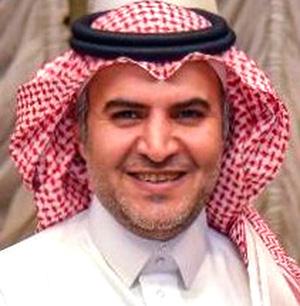
resilience allowed workloads to be moved instantly between providers, while giving the MoH’s IT team visibility of, and the ability to manage, workloads from a single pane of glass. This solution also future proofs the network, by enabling the IT team to add new locations such as private clouds which can be easily integrated into the multi cloud layer, and then controlled from the same portal.
The deployment of VMware VCF includes VMware NSX-T Data Center as the platform for building the secure virtual cloud network; VMware vRealize Suite as the cloud manage-
• Move to a unified, multi-cloud strategy with VMware, with all workloads under one umbrella
• Offer the ability to offer innovative IT services to the entire healthcare sector across the country.
• Develop an integrated health system based on the health of the individual and society. Roll out
• Spread IT workloads across various service providers, including telecom operators STC and Mobily
• Unify everything under VMware Cloud Foundation, VCF hybrid cloud platform.
• Increased resilience will allow workloads to be moved instantly between providers.
• MoH’s IT team will gain visibility and ability to manage, workloads from a single pane of glass.
• This will enable the IT team to add new locations such as private clouds which can be integrated into the multi cloud layer.
• The deployment of VMware VCF includes VMware NSX-T Data Center, VMware vRealize Suite, VMware vSAN, VMware vCenter, VMware vSphere.
• MoH deployed VMware HCX to help streamline application migration, workload rebalancing and business continuity across the environment.
Benefits
• The public healthcare system is set to benefit from resiliency, agility and efficiency created by the shared cloud platform.
• Each facility will save resources by having access to virtual infrastructure, storage, machines, and as-a-service applications.
• They will be able to design and deploy applications from the cloud, giving them the freedom to innovate.
• Health clusters are able to gain access to all types of IT services from a services menu.
• This gives easy access to IT resources, from new email accounts to back-up services, virtual machines and security.
Future milestones
• MoH is planning to deploy VMware Carbon Black for additional cybersecurity, VMware Workspace ONE for secure distributed working, and VMware Tanzu to enable Kubernetes in vSphere
• Bring additional application development capabilities to the Saudi Arabia’s public healthcare providers.
ment suite to provide automation, operations, log analytics, and lifecycle management on-premises; and VMware vSAN to reduce storage complexity and cost.
The deployment also included VMware vCenter to gain visibility across the hybrid cloud from a single console, and VMware vSphere to enable the MoH to develop and deploy modern applications from the cloud. The MoH deployed VMware HCX to help streamline application migration, workload rebalancing and business continuity across the environment.
With the full VCF stack deployed, Saudi Arabia’s entire public healthcare system is set to benefit from the resiliency, agility and efficiency created by the shared cloud platform. Each healthcare facility will save valuable resources by having access to virtual infrastructure, storage, machines, and as-a-service applications from the Ministry of Health. They will also be able to design and deploy applications from the cloud, giving them the freedom to innovate and provide stellar services to patients.
By having unified cloud system, doctors, nurses and patients will have reliable and secure access to patient records wherever they are, and
all healthcare professionals, including hospital managers, will have improved access to the data they need, without worrying about potentially disruptive IT outages.

The MoH and VMware are continuing to move additional workloads on to the new environment, and more IT resources will be made available for healthcare facilities to access and use via their IT admin portals. In the coming months, the MoH is planning to deploy more VMware solutions including VMware Carbon Black for additional cybersecurity, VMware Workspace ONE for secure distributed working, and VMware Tanzu to enable Kubernetes in vSphere, which will bring additional application development capabilities to the Saudi Arabia’s public healthcare providers.
“As Saudi Arabia’s population continues to rise, and demand for world-class healthcare intensifies, this project with VMware has ensured that the MoH and the country’s healthcare providers are prepared for the future with the ability to innovate and deliver healthcare for the 21st century,” says Eng Khalid Almedbel, CIO Ministry of Health.
“All departments have gained agility, mobility, and can achieve a faster response to business requirements, which will elevate healthcare in the Kingdom,” he added.
“We look forward to working in partnership with the MoH as it continues to move workloads to the new environment and offer more cloud-enabled services to healthcare providers across the country,” said Saif Mashat, Saudi Arabia Country Director, VMware.
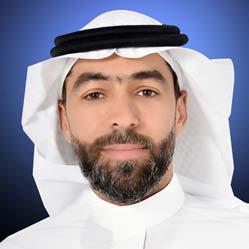
Health clusters and hospitals are now able to gain rapid access to all types of IT services from an intuitive service menu. This enables easy access to IT resources, from new email accounts to back-up services, virtual machines and security.
This project with VMware has ensured that the Ministry of Health and the country’s healthcare providers are prepared for the future with the ability to innovate and deliver healthcare for the 21st century. ë
Increase in video meetings in 20201
Growth of UC meetings with video from 2019 to 20202
11% 400% 71% 274%
Information workers who rarely or never use video in meetings3
Information workers who use video at least once a day3
Superior Audio and Video: A video bar engineered for midsize rooms, featuring a motorized PTZ lens, adaptive beamforming mics, support for two


Flexible Deployment Options: Run meetings in appliance mode without a computer for Microsoft Teams, Zoom, GoTo, Pexip, or RingCentral Or, connect to a computer or laptop and use with any software.
Simple Setup and Cable Management: Place on a table or credenza, or add a wall or TV mount for a sleek space-saving set up Integrated cable management keeps connections tight.

Easy to monitor, manage, and support: Stay informed and ahead with metrics like people count.
MAKE EVERYONE LOOK AMAZING.
Medium room solution with Logitech Tap for Microsoft Teams Rooms.AmiViz, the Middle East region’s first enterprise B2B marketplace, announced that the company has signed a partnership with Cyber Security Works CSW, a leading platform and services provider of predictive, AI-powered Attack Surface and Vulnerability Management solutions.

Cyber Security Works is a US Department of Homeland Security–sponsored CVE Numbering Authority and a leader in Attack Surface Management. The availability of CSW’s mature Vulnerability Man-
agement as a Service and Application and Infrastructure Penetration Testing services at the AmiViz marketplace will help enterprises in the Middle East improve their security posture and reduce vulnerabilities.
The partnership with AmiViz will also enable CSW to expand its reach across the region and enhance its go-to market timelines as it can connect with a larger base of partners on the marketplace, thereby saving time and resources to address such a wide region with different countries.

Microsoft announced general availability of Azure Availability Zones, to be delivered via its UAE data centres in Dubai. The investment, which is aimed at enhancing the competitiveness of UAE businesses through the vital provision of business continuity and disaster recovery solutions, reinforces Microsoft’s commitment to the UAE government, its business community, and its population.
Azure Availability Zones is a critical building block of a comprehensive business
continuity and disaster recovery strategy. It is designed to guarantee resilience and availability of business-critical applications and data in times of crisis, through advanced architecture and built-in, end-to-end security. The launch of Azure Availability Zones also signifies the readiness of Microsoft’s UAE cloud locations to form the backbone of organisations’ futureproofing programmes, undertaken in the wake of the COVID pandemic crisis.
Azure Availability Zones will build on
the capabilities and benefits offered through Microsoft’s enterprise-grade data centres in Dubai, which began operations in June 2019. The facilities’ services have empowered several organisations to further increase their capacities and reimagine their operations. Among those that have already migrated to Microsoft Azure Availability Zones in the UAE are Emirates Group, Commercial Bank of Dubai, Mashreq Bank and First Abu Dhabi Bank.
Under the theme Together we Innovate, Huawei, a Global Tech Giant, recently inaugurated the 2022 edition of the Huawei Global App Innovation Contest Apps UP. This year’s edition features a new category, “Best Arabic App”, encouraging regional developers to create app solutions that address the region’s needs and enrich Arabic content.
The 2022 Huawei Global App Innovation Contest is a global event held by Huawei to strengthen the skills of regional app developers and drive collaboration to build a connected app ecosystem. Apps UP 2022 competition includes five regions: Europe, Asia Pacific, Latin America, Middle East and Africa, and China. The top three outstanding apps in the Arabic


Raqmiyat, has partnered with Codebase Technologies, a global open API banking fintech. The partnership will accelerate digital banking transformation in UAE and KSA, with Raqmiyat serving as a regional business partner and authorised reseller of Codebase Technologies’ solutions.
By leveraging the partnership with Codebase Technologies, Raqmiyat will provide digital banking services to banks, fintech and other corporates that take advantage of Codebase Technologies’ cutting-edge Digibanc platform to meet the evolving needs of the market and customers. In turn, customers will gain access to an extensive range of innovative banking and payment products tailored to their lifestyles.
language or apps that support the dialectal selection will take home the Best Arabic App award.
With this year’s theme, #TogetherWeInnovate, Huawei has set aside more than $1 million as prize money for the global contest, in addition to exciting incentives, including vouchers from AppGallery Connect. $230,000 has been dedicated to developers in the Middle East and Africa, with individual prizes amounting from US$5,000 to US$15,000. Participants also get the opportunity to engage and learn from industry experts and have their apps evaluated by a judging panel of experts in several sectors. AppGallery is one of the three top application marketplaces, and developers on the platform can reach 730 million global Huawei device users. They also join a growing community of 5.4 million registered Huawei developers worldwide.
The categories include the Best App, Best Game, Best Social Impact App, All-Scenario Coverage Award, Tech Women’s Award and the Best Huawei Mobile Services HMS Innovation Award. The HMS Innovation Award encourages developers to create apps that integrate new HMS capabilities and services. In parallel, the Student Innovation Award recognises outstanding student developers that showcase innovative creations.
The solutions encompass a comprehensive technology stack for NeoBanks, Challenger Banks, Islamic Banks, and Micro Finance Banks including Next Generation Omnichannel Banking Solutions, Core Banking, Open Banking, Smart Rules, BNLP, Omni Channel Orchestration Engine, Social Pay, Super App, and many more.

Rackspace Technology announced it has achieved Qualified Security Assessor Company status for the Payment Card Industry Data Security Standard across EMEA referred to as Europe and CEMEA by the PCI SSC. The registration is part of the globally accepted Payment Card Industry Data Security Standard, a set of 12 requirements and multiple subrequirements designed to optimise the security of credit, debit card transactions to protect cardholders against misuse of their payment card information.
Obtaining QSAC status means that Rackspace Technology can now offer a number of services to merchants ensuring their payments and processing of card data is managed securely.
l Annual Reports on Compliance to customers who stores, processes or transmits more than 6 million Visa and Mastercard payments per annum or more than 300,000 for service providers.
l S cope review and any possible de-scoping options
l Gap analysis
l S elf-Assessment Questionnaire assistance and guidance
l Staff awareness workshops
l Documentation review and provision of templates
l Approved Scanner Vendor
l Penetration testing and code reviews
l Multi Factor Authentication solutions
l File Integrity Monitoring solutions
ABB and Red Hat have announced a global partnership to enable industries using ABB’s process automation and industrial software to scale rapidly and flexibly leveraging Red Hat’s industry leading enterprise platforms and application services built on Red Hat Enterprise Linux.
The collection, management, and analysis of industrial plant data is critical to improve the efficiency of operations while addressing safety, security and productivity needs. This is consistent with ABB’s strategy for the evolution of process automation.
The partnership enables virtualisation and containerisation of automation software with Red Hat OpenShift to provide advanced flexibility in hardware deployment, optimised
according to application needs. It also provides efficient system orchestration, enabling realtime, data-based decision making at the edge and further processing in the cloud.
Red Hat OpenShift, the industry’s leading enterprise Kubernetes platform, with Red Hat Enterprise Linux as its foundation, provides ABB with a single consistent application platform, from small single node systems to scaled out hyperconverged clusters at the industrial edge, which simplifies development and management efforts for ABB’s customers.
Red Hat OpenShift increases the deployment flexibility and scalability of ABB Ability Edgenius, a comprehensive edge platform for industrial software applications, together with ABB Ability Genix Industrial Analytics and AI Suite, an enterprise-grade platform and applications suite that leverages industrial AI to drive Industry 4.0 digital business outcomes for customers. ABB’s Edgenius and Genix can both be scaled seamlessly and securely across multiple deployments. With this partnership, ABB will have access to capabilities like zero-touch provisioning remote configuration of networks which can increase manageability and consistency across plant environments.
 JEFF BENNISON
JEFF BENNISON
datamena, a carrier neutral data centre and connectivity platform, has attained a high score in the latest conformance report issued by the Mutually Agreed Norms for Routing Security MANRS, an initiative of the Internet Society for the improvement of security on the Internet. According to the report, datamena’s IP platform utilises globally recognised best industry practices to provide companies with best-in-class security and data protection for their traffic flows.
The industry supported MANRS initiative builds on well-established best practices that address common threats in the global system for the routing of data traffic. MANRS’ mission aligns closely with datamena’s objective to mitigate threats and improve resilience and
security on the Internet, keeping data transmission safe for businesses and consumers alike.
Whether accidental or with malicious intent, problems that arise from how traffic is routed make the Internet vulnerable to abuse, attacks, and errors. By adopting MANRS, datamena ensures that information arrives at its intended destination, and collaborates on safeguarding the global security of everything that travels via the Internet.
datamena is a member of the MANRS programme and this latest conformance score is the result of constant observation and a continuous process of improvement, along with operational best practices. The datamena IP platform offers world-class, secure services
and simplifies business for carriers, operators and content providers by consolidating infrastructure and reducing IP costs, giving them cost-effective access to the MENA region and beyond.
Dahua Technology announced a strategic partnership with Dubai-headquartered ABCOM Distribution. The partnership between the two companies is arguably one of the biggest industry developments in the pandemic aftermath in MENA.

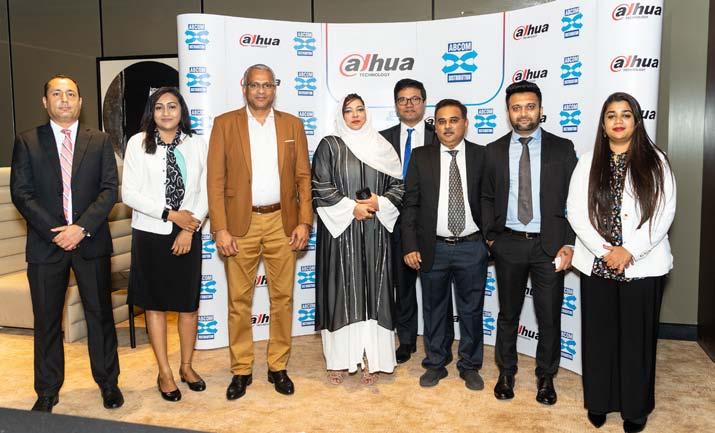
The distribution partnership follows Dahua Technology’s ambitious entry into the smart IoT and digital signage segment. Previously, Dahua’s offerings in the MENA market mainly focused on video surveillance devices and solutions, where the conglomerate boasts a leading position globally.
The offerings also include outdoor variants that boast protective tempered glass and resilience in extreme weather conditions. ABCOM will also disburse Dahua’s top-grade monitors, video walls and indoor, outdoor fixed and mobile LED displays to customers in MENA.
The unmatched product quality is owed to Dahua’s robust R&D strategy, which involves sizable human capital over 50% of nearly 22,000 employees working in R&D and physical capital investing approximately 10% of its sales revenue to R&D every year.
The offerings also include outdoor variants that boast protective tempered glass and resilience in extreme weather conditions
ABCOM joins a reputable list of Dahua’s distribution partners in more than 180 countries. With a global marketing and service network,
Dahua technology has established 57 branches, including the one in Jumeirah Lake Towers, Dubai, from where it caters to customers across the MENA region. The game-changing partnership with ABCOM is expected to further enhance Dahua’s service capabilities.

Analytics leader SAS has joined forces with SingleStore to help organisations remove barriers to data access, maximise performance and scalability, and uncover key data-driven insights. SAS Viya with SingleStore enables the use of SAS analytics and AI technology on data stored in SingleStore’s cloud-native real-time database. The integration provides flexible, open access to curated data to help accelerate value for cloud, hybrid and on-premises deployments.
Through SingleStore’s data compression and SAS’ analytic performance, the companies aim to reduce the complexity of data management and integration, as well as the computational time required to train sophisticated models.
SAS Viya with SingleStore enables the advanced AI and machine learning analytics of SAS to be executed directly against relational database tables in SingleStore. By delivering this capability, SAS and SingleStore will considerably reduce customers’ technical debt of duplicative data stores, helping improve analytic workload performance and ultimately uncover key competitive advantages

Tata Consultancy Services has been recognised with the 2021 Best Practices Company of the Year Award in the GCC’s Business Process Outsourcing Industry by Frost and Sullivan, an American research and consulting firm. Emerging as the front runner across key dimensions of innovation, growth and customer impact, TCS stood out for its visionary efforts in evolving its services, workforce and business models to cater to future market needs.
TCS’ Business Process Services help businesses strengthen resilience, gain agility,
Ingram Micro announced expansion of its distribution of NVIDIA technology. Ingram Micro is now authorised to sell and promote NVIDIA’s high-performance networking technology in the Middle East, Turkey, and Africa including Saudi Arabia, UAE, Qatar, Kuwait, Oman, Bahrain, Egypt, Lebanon, Jordan, Pakistan, Turkey, South Africa,
Morocco, Tunisia, and Algeria.
NVIDIA Networking provides complete end-to-end solutions supporting high-speed Spectrum Ethernet switch systems, NVIDIA ConnectX smart network interface cards, InfiniBand connectivity via adapters, switch systems, gateways and long-haul systems, and NVIDIA BlueField data processing units.
embrace new models, achieve superior business outcomes, and drive growth. TCS provides a comprehensive suite of offerings covering enterprise functions such as finance and accounting, supply chain management, human resources, customer experience and marketing services as well as industry-specific offerings for banking and financial services, communications, media, and information services, retail and consumer products, energy and resources, utilities, manufacturing, and travel, transportation and hospitality.
TCS adopts a unique consultative approach to complex operations challenges. Its AI-driven human-machine collaboration suite TCS Cognix, enables various stakeholders such as CFOs, CPOs, CHROs, CMOs to improve time to market, cash flow, operational expense, net promoter score, and employee experience.
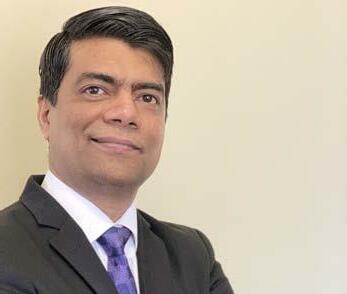
Redington Value signed a distribution agreement with Dragos, global vendor in cybersecurity for industrial controls systems and operational technology environments. Under the agreement, Redington Value will deliver Dragos’ complete suite of solutions to help fortify the cyber defences of organisations operating in the region’s critical infrastructure sector.
Dragos offers a full spectrum of industrial security solutions that combine the technology, intelligence, and expert services to secure ICS OT environments. The company has built the largest and most experienced team of OT risk analysts, threat researchers, and incident responders, and codifies their expertise into the Dragos Platform, delivering the most effective protection against industrial cyber threats.
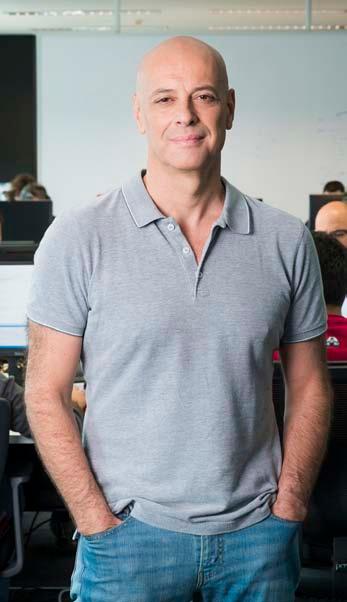
High-profile incidents over the last 12-18 months have made securing critical infrastructure a top priority for governments in the region and around the globe. Any attack on these services could lead to irrevocable harm to operations. A recent Gartner report predicts that by 2025, cyber attackers will have weaponised a critical infrastructure cyber-physical
system to successfully harm or kill humans.
With the latest announcement, the distributor’s vast partner ecosystem can offer a compelling value proposition for regional customers with Dragos’s suite of solutions. Redington Value will conduct trainings and workshops to educate partners on how to position Dragos offerings and design customised security solutions for customers across verticals.
Dragos has built the largest and most experienced team of OT risk analysts, threat researchers, and incident responders
OutSystems announced it has become an official member of the SAP PartnerEdge programme, with a Build focus, underscoring its commitment to providing high-value low-code to businesses using SAP solutions. While twice as many OutSystems customers connect to SAP technologies as any other system of record, the new relationship will make it even easier for additional businesses within the SAP ecosystem to discover and connect with OutSystems.
Through participation in the SAP PartnerEdge programme, OutSystems is able to integrate its offering with SAP solutions. The SAP Integration and Certification Centre has certified that the OutSystems Platform integrates with SAP S4HANA and SAP NetWeaver using standard integration technologies.

The relationship makes it easier for businesses to interoperate with SAP S4HANA by building new customer experiences, critical
customisation and application development capabilities, innovative customer and partner portals, and smooth enterprise system migration. Integration with SAP technologies is one of the most common use cases for OutSystems customers as they look for solutions to unlock business innovation, team productivity, and investments in SAP offerings.
The OutSystems Platform allows businesses to rebuild custom business logic to keep the core clean as they migrate to SAP S4HANA. Examples of OutSystems’ implementations that have made fast, effective innovation more accessible to developers include:
Multibillion-dollar IT distributor Redington Gulf used OutSystems and robotic process automation to modernise their SAP instance and build a rebate management system on top of the SAP application in only three weeks.
The Communication and Information Technology Regulatory Authority granted permission to HUAWEI CLOUD to offer cloud services in Kuwait as the GCC country pursues a cloud-first policy. With the new development, Huawei will deliver innovative cloud services to support Kuwait’s 2035 vision, which seeks to create a diversified, sustainable economy.

Huawei recently announced plans to host
two cloud regions in the Middle East, a boost for local businesses and governments’ ability to access more robust and secure cloud services from Huawei.
The announcement represents a key milestone in HUAWEI CLOUD offerings committed to support Kuwait digital transformation journey and demonstrates HUAWEI CLOUD’s growing profile in Kuwait and the region as part

of its global presence. HUAWEI CLOUD has emerged as an essential platform for internet companies and organisations to go digital.
Now as the fastest-growing cloud services provider in the world, HUAWEI CLOUD has attracted 2.6 million developers, 28,000 consulting partners, 9,000 technical partners, and released 6,100 Marketplace products five years since launch. In the Middle East, HUAWEI CLOUD offers more than 220 cloud services, 210 solutions, 19 data centres, over 200 local partners, and a growing list of more than 80 marketplace offerings.
Liferay, announced the launch of its Solutions Marketplace to offer accelerator solutions including customer portals, intranets, and supply-chain solutions. This will help companies jumpstart the tailored digital experiences they create on the Liferay platform.

The Marketplace complements Liferay’s low code capabilities and extensions architecture, further reducing the complexity of developing, launching, maintaining and evolving tailored solutions on the Liferay platform.
Developed by Liferay and its partners, the solutions offered in the marketplace address business challenges in industries such as manufacturing, insurance, government, retail, and financial services.
The first phase of the Solutions Marketplace launch includes the availability of more than 20 solutions, with new solutions being added regularly. Liferay will continue to enhance their marketplace into 2023 by allowing companies to transact and interact directly with solution providers using additional features in their new Liferay Experience Cloud offering.
Liferay, announces marketplace with solutions for customer portals, intranets, supply-chain
AmiViz, the Middle East region’s first enterprise B2B marketplace announced the launch of their new Customer Loyalty Programme that is aimed at attracting new customers and retaining the existing ones. The company has curated this new loyalty programme aimed at presenting a strong technical value and pre-sales support to its customers, which are willing to work
with AmiViz team offering more personalised customer engagement strategies and unique value propositions.

The Programme primarily covers the technical aspects that helps in business decision, assessment and nurturing of a technology to explore feasibility and interoperability to seamlessly fit into the eco-system of other tech-
nologies within the customers network and business environment.
The eligibility criteria for the AmiViz Customer Loyalty Programme is well defined and it states that the customers who has purchased two or more technologies in the last 12 months are qualified to subscribe in this Programme. The key benefits of the Programme are listed below:
Platform Access: Customers can request for demo or training access to the platform by requesting the session via the Mobile App or Portal Access. The access is available during the working hours and in future it will be enabled for 24, 7 access.
Named Technical Account Manager: Each customer will be assigned a named technical account manager who manages the customer requests and customisation of demo or training platform. Upon request, the TAM will customise the demo environment with integration and interoperability setup for customer to have hands-on experience with multiple technologies.
Bring Your Own Software License: Customers are allowed to install a software of their choice if it is not part of the existing demo inventory, this will be done in close coordination with TAM, multiple other factors are considered and assessed from technical, storage, duration and resources perspective to assist further.
Bring Your Own Log Data: The platform encourages customers to bring their own log data to simulate the required environment away from their own network. The log data helps build a simulated environment within the eco-system of multiple technologies and view them on dashboard or generate reports or simply navigate the interface to observe diverse results.
Beta Tester: If customer would like to beta test any vendor’s new releases, AmiViz TAM will facilitate in getting this done. AmiViz TAM will nominate the customer as Beta tester, obtain the Beta license and help install in customer environment or AmiViz’s Demo platform. Customer can evaluate and submit their inputs, feedback directly to vendor.
Training, Certification: The platform can be made available for training purposes with customisation and integration of multi-technology. Additionally, customer’s get informed about training calendar run by the vendors within EMEA region.
Dr

Cogniteam, the developers of a leading drag n’ drop robotics operating system Nimbus, is partnering with designer and manufacturer of industrial IoT and Edge artificial intelligence solutions AAEON to develop ready-to-build robotic hardware. Companies who recognise a new market demand can immediately choose the AAEON system, device, or hardware that’s right for them and know that it’s fully supported with the Nimbus no-code integration. This means companies can quickly develop and deploy advanced GPS, light, and other sensors using field-tested software solutions.
Developing and deploying a robot is time and resource intensive. From the moment a decision is made to build the robot, until it is actually deployed can often take years. By
the time it is used for its initial purpose, the technology risks already being out of date.
In response, AAEON partnered with Cogniteam to develop hardware systems that come with various foundational capabilities- all of which are pre-integrated with Nimbus. Without this key advantage, operators lack cloud-connected capabilities, which allow for over-the-air updates, monitoring, insights, and operational insights.
Since its launch, Cogniteam’s Nimbus has improved integration and widespread adoption of ROS and NVIDIA Jetson software packages. Developers pick from a catalogue of algorithms, artificial intelligence, process control, spatial recognition, and more. The robot can then be tested in a simulated environment to understand
how the robot will handle various scenarios before it ever leaves the production floor. “ Moving the burden of integration from individual organisations to a centralised platform gives robot operators valuable analytics, fleet management capabilities, OTA updates, remote control features, and more.
Integration demands will only increase as edge devices begin carrying greater processing power and more advanced capabilities. Robots and components that are designed for cloud connectivity integrations benefit from a longer life thanks to the ability for features to be added over time. Outfitting robots with tools for modern activities allows them to remain in the field longer without the risk of becoming obsolete.
Ingram Micro announced a distribution agreement with Motorola Solutions, a global vendor in public safety and enterprise security, growing its Smart Video Security and Analytics portfolio.
Ingram Micro will distribute Motorola Solutions Video Security and Access Control products in the Middle East, including:
• Avigilon portfolio of end-to-end video security, access
control and cloud solutions embedded with advanced image and video analytics
• Pelco IP video cameras and video management systems
• IndigoVision end-to-end video security solutions
• Ava Security real-time anomaly detection, proactive notifications and smart searching in cloud-native cameras
• Openpath cloud-based and on-premises access control solutions
(Left to right) Yehuda Elmaliah, Co-founder and CEO of Cogniteam; Owen Wei, Marketing and BD Manager at AAEON.Yellow.ai, an enterprise-grade Conversational AI platform trusted by 1,000+ enterprises globally, announced the launch of its proprietary DynamicNLP, a first in the enterprise Conversational AI space to enable enterprises to go-live within minutes with lower operational costs and an intent accuracy of over 97%.
According to the future of conversational AI from Deloitte, training AI agents with manual methods can take as long as six to nine months, making it one of the most common setup challenges faced by enterprises. Yellow.ai DynamicNLP eliminates the tedious process of training and labelling Natural Language Processing NLP models manually. This enables Dynamic AI agents to learn on the fly, helping enterprises to set up Conversational AI flows
within minutes, and reduce training datarelated costs and efforts.
Yellow.ai DynamicNLP comes with a pretrained model built using billions of anonymised conversations, which helps in the reduction of unidentified utterances by up to 60%, making the AI agents more humanlike and scalable across industries with wider use-cases.
With DynamicNLP, Yellow.ai’s platform is capable of improving the accuracy of seen and unseen intents in utterances right from day one. The elimination of manual labelling also helps remove the errors propagated, leading to a stronger, more robust NLP with better intent coverage for all types of conversations.
With the agility offered by Yellow.ai Dynam-

icNLP, enterprises can successfully maximise efficiency and effectiveness across a wider gamut of use cases, including Customer Support, Customer Engagement, Conversational Commerce, HR and ITSM Automation.
SonicWall announced the introduction of the new Wi-Fi 6 wireless security product line, which provides always-on, always-secure connectivity for complex, multi-device environments. Powered by Wi-Fi 6 technology, the new SonicWave 600 series wireless access points, coupled with Wireless Network Manager WNM 4.0, enable organisations to automatically secure wireless traffic while boosting performance and simplifying connectivity.
SonicWall Wireless Network Manager WNM 4.0 provides an easy, effective way for enterprises, partners and MSSPs to securely manage wireless networks. WNM leverages the cloud to simplify management of complex environments with a unified, single-pane-of-glass cloud management portal.
The SonicWave 600 series uses Wi-Fi 6 technology which can increase overall wireless throughput by up to 4X compared to Wi-Fi 5 technology and reduce latency by up to 75%. Additionally, the SonicWave 600 series includes key features that address business needs for security, management, ease of deployment and scalability, including:
Increased wireless throughput by up to 4X. Superior Wi-Fi 6 performance using 802.11ax technology improves throughput, latency and total cost of ownership TCO.

Ultra-fast wireless speeds on busy networks. Powered by Wi-Fi 6 technology, the SonicWave 600 series helps eliminate issues arising from crowded wireless networks while ensuring top speeds in highly dynamic environments.
All SonicWave access points, including the new SonicWave 600 series, integrate with the cloud-delivered Wireless Network Manager 4.0, which allows for control and troubleshooting of wireless and switching access across networks of any size or region with a single pane of glass.
Designed with MSSPs in mind, the Wireless Network Manager infrastructure simplifies access, control and troubleshooting by unifying multiple tenants, locations and zones, while supporting thousands of SonicWave access points and SonicWall network switches — all without the cost of complex overlay management systems.
The SonicWave 600 series will also be expanded with the release of SonicWave 621, currently scheduled for release by the end of calendar 2022.
Alibaba Cloud, the digital technologies and intelligence backbone of Alibaba Group, has unveiled its latest chip development platform, named Wujian 600. It has been created to help global developers in the design of highperformance Systems-on-Chip for edge-AI computing leveraging the RISC-V instructionset architecture in an efficient and cost-effective way.
Custom-built by Alibaba Group’s chip development business, T-Head, Wujian 600 has been tailored specifically for developing edge SoCs.
With enhanced CPU capability and heterogeneous architecture for high-performance embedded and edge products, the platform facilitates the design of SoCs in embedded applications, including home robots, medical imaging and video conferencing. It also includes an optimised software stack to help speed up the rollout of products to the market.
Available for licensing, the platform aims to aid global developers by reducing the development costs and shortening the design cycle of chips, making the mass production of RISC-V
based high-performance SoCs a reality.
An example of the Wujian 600’s platform performance is reflected in the development and prototyping of TH1520, a high performance SoC by T-head. TH1520 demonstrates exceptional speed and power efficiency in an embedded AI computing device.
It brings CPU and AI computing to the edge with quad-core Xuantie C910 CPU up to 2.5GHz, 4 TOPs of NPU, 64-bit 4266MT on DDR, and a wide range of standard I, O interfaces. It also adopts the Trusted Execution Environment TEE security certification scheme that meets the GlobalPlatform standard. Proving the reliability of the platform, TH1520 has already been used inside Alibaba’s ecosystem.

With the Wujian 600 platform, developers can now run desktop-level applications, such as FireFox browser and LibreOffice built on OpenAnolis, an open-source Linux-based operating system launched by Alibaba in 2020. This marked a milestone for RISC-V based SoCs being used in high computing-demand scenarios, such as edge computing. Collaboration with T-head’s ecosystem partners, such as OpenAnolis, will also lead to further optimisation of the software stacks on Wujian 600.
Earlier this year, Alibaba Cloud announced it has made further progress in porting basic Android functions onto the RISC-V instruction-set architecture. This makes it feasible to use RISC-V based Android devices in scenarios ranging from multimedia to signal processing, device interconnection, and artificial intelligence. Alibaba Cloud’s Xuantie C906 processor also attained firsts in the most recent findings from MLPerf Tiny v0.7, an AI benchmark focusing on IOT devices.

The need for managed detection and response is soaring as attack surfaces grow, cloud usage skyrockets and the cybersecurity skills gap widens. Palo Alto Networks introduced Unit 42 Managed Detection and Response to address this need with a new service that can offer continuous 24 x 7 threat detection, investigation and response.
This offering brings together Palo Alto Networks acclaimed Cortex XDR with Unit 42’s industry-leading threat intelligence, which includes insights from incident response cases.
Because Unit 42 MDR is built on Cortex XDR, it is optimised to not just prioritise alerts but also to massively reduce the number of alerts customers receive. This helps customers detect more suspicious activity than they would have otherwise. The new Unit 42 MDR service offers customers cybersecurity experts to help identify and respond to security alerts and potential threats in real time, enabling businesses to focus security operations personnel on other organisational security priorities.
Alibaba Cloud reveals high-performance Systems-on-Chip for edge-AI computing leveraging RISC-VWujian 600 development platform specialised for developing edge SoCs.
NetApp announced general availability of Spot Security. Built for the cloud, Spot Security delivers a solution for continuous assessment and analysis of cloud security posture. Spot Security enables DevOps and SecOps teams to easily collaborate to identify misconfigurations, reduce their potential attack surface, and ensure compliance.

Spot Security’s agentless technology analyses cloud resource
relationships to provide clear visibility and prioritised actions, automatically determining the prospective exposure of each cloud resource and surfacing critical security threats based on their potential impact to the organisation. These automated actions mitigate alert fatigue and keep cloud infrastructure secure and operations teams efficient.
Confluent announced the Confluent Terraform Provider as part of its Q3 ‘22 Launch. Developed in partnership with HashiCorp, a provider of multi-cloud infrastructure automation software, the Terraform provider exposes Confluent Cloud APIs for simple, consistent, and automated management of missioncritical data streaming resources, including cloud environments, Apache Kafka clusters, networks, topics, connectors, and more.
Now, engineering teams can easily integrate data streaming within CI-CD workflows and GitOps processes on AWS, Microsoft Azure, and Google Cloud, enabling them to launch real-time applications faster and avoid the high operational costs and risks tied to manual resource provisioning.
Data streaming is increasingly essential to deliver the real-time experiences today’s
customers demand and data-driven operations businesses need. But developers building and launching data streaming applications with
open-source Apache Kafka are often blocked, waiting for access to infrastructure resources.

The Confluent Terraform Provider gives engineering teams easy access to the full set of data streaming resources they need, ranging from Kafka clusters and private networks to service accounts and ACLs. With provisioning and management of data streaming infrastructure automated throughout all clouds, the benefits of real-time data can scale across the entire business to fuel faster innovation from a wider set of teams.
By enabling security teams to see workloads that are ephemeral and transient in nature, VMware Carbon Black Workload for AWS provides authoritative context to help AWS customers better secure modern applications. Automatic gathering and listing of vulnerabilities help identify risk and harden workloads, further shrinking the attack surface, while CI CD packages for sensor deployment further simplify agent lifecycle management.
Juniper Networks has received a “AAA” rating in the first-ever Cloud Network Firewall evaluation by CyberRatings.org, a non-profit member organisation that provides transparency and expert guidance on cybersecurity risks via research and objective product testing.
This is the latest in a series of third-party tests, analyst reports and customer wins that validate Juniper’s Connected Security portfolio, which sets the bar for security effectiveness, performance, scale and cost savings across a wide array of use cases – from Zero Trust datacentres and workload protection – to secure SD-WAN and SASE transformation.

CyberRatings tested Juniper Networks vSRX Virtual Firewall deployed within an AWS environment, a deployment scenario that has become a popular use case with public cloud usage expected to grow 20.4% in 2022, according to Gartner Forecast: Public Cloud Services, Worldwide, 2020-2026, 1Q22 Update. Juniper vSRX achieved top scores across all five tested categories:
• AAA in Threat Prevention: 100% exploit block rate with 0 false positives
• AAA in Performance: 974 Mbps overall rated performance
• AAA in Management and Reporting Capabilities
• AAA in TLS, SSL Functionality: Supporting 100% of the tested cipher suites and encryption use cases
• AAA in Routing and Policy Enforcement
• Perfect Security Effectiveness and Low TCO
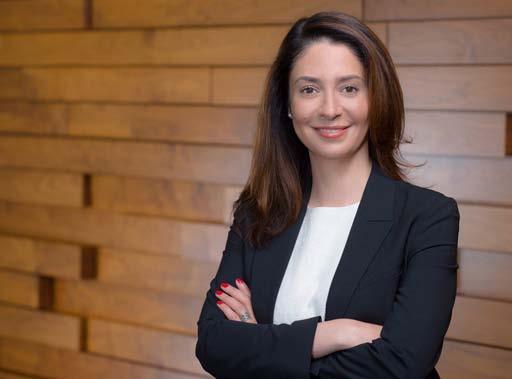
Anthology introduced Anthology Intelligent Experiences iX, the company’s vision for a connected ecosystem of products and services that use data to power meaningful interactions both in and outside the classroom.
The Anthology iX approach will create interactive moments by breaking down data silos and combining insights across critical systems to inform more relevant engagement between staff, faculty and learners.
By contextualising data to make it actionable and marrying it with experiences that have historically been routine, the iX-vision applied to Anthology’s products will deliver real-time insights that help educators and administrators provide better services and support to students, while learners also receive the right data to make more informed decisions.
To support the entire learner journey, both students and institutions depend on a wide range of technologies, including the learning management system, student information
system, and customer relationship management system. Data serves as the structural glue for these solutions and can be used to make everyday actions easier and more impactful by delivering real-time guidance that supports critical decision points within an institution’s existing workflows.
Anthology iX was developed in response to institutions’ need for proactive insights that do not place the burden of data analysis on users. According to Anthology’s 2022 global research study, Comparing University Mindsets and Student Expectations, 94 percent of higher education leaders surveyed agreed that a holistic view of a learner’s data pulled across multiple systems would benefit their team and that more personalised experiences would ultimately help more learners at their university achieve their goals.
Anthology maintains the highest data privacy standards and will continue to prioritise the security of client data as it delivers on the iX-product vision.
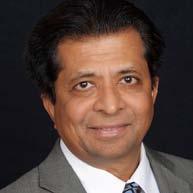
AVEVA, launched the 2023 release of its operations control software, the first major coordinated release of its HMI, SCADA software portfolio, available in both perpetual and subscription purchases. The new release further supports the delivery of AVEVA Operations Control, a flexible, subscription-based solution of integrated capabilities that promotes greater efficiency and workforce collaboration at the scale that best suits the business.
The first of its kind in the industrial software sphere, AVEVA Operations Control simplifies day-to-day routines of teams by aligning work-

ers around common digital threads of information, delivering the data and insights they need to drive growth at every level through increased efficiency, agility and reliability.
The 2023 operations control software release is available through several procurement methods, including AVEVA Flex, the advanced industrial software subscription program. Customers can choose individual software offers within the operations control portfolio or realise new transformational value with end-toend visibility across operations by subscribing to AVEVA’s broad portfolio through AVEVA

AVEVA, announced addition of industrial data-sharing capabilities to its AVEVA Connect industrial cloud platform for hybrid SaaS solutions. With this latest addition to AVEVA’s cloud services, customers can now access AVEVA Data Hub, a secure, cloud-native service for aggregating, managing and sharing operations data to gain new insights and improve operating performance.
Operations Control. AVEVA Operations Control removes traditional limitations on implementation by including unlimited software usage measured by the number of users and offering maximum commercial flexibility.
AVEVA Operations Control helps workers to do their jobs in a more sustainable way. Its comprehensive digital framework supports quicker, data-backed responses to events that require resolution, providing reliable process management systems, and reducing the effort required to train new staff. Customers across industries can further enrich their approach to environmental, social and governance ESG initiatives by leveraging the solution to tap data-driven insights for more efficient and environmentally sustainable operations.
AVEVA Data Hub lets industrial companies selectively share operations data with trusted stakeholders such as key suppliers, equipment providers, data scientists, enterprise business analysts, and other authorised partners. This information-led network of interlinked organisations, referred to as the connected industrial economy, offers the ability to unlock operational efficiencies, increase sustainability, and drive digital transformation at scale.
AVEVA Connect continues to add hybrid SaaS solutions that will bring customers and partners together to elevate the entire industrial ecosystem from design to operations and through to optimisation. The industrial cloud platform enables search, data access and configuration API, community data sharing, and reference content. The ability to aggregate data in the cloud from on-premises and third-party systems supports streamlined collaboration over digital twins. Digital twins are virtual replicas of physical assets such as power plants or manufacturing facilities.
Juniper Networks announced that it has been selected by Jazz, Pakistan’s number one 4G operator and the largest internet and leading digital service provider, to create a transformative, expanded and upgraded data centre network to underpin Jazz’s services delivery platform for its 74.9 million subscribers. Jazz’s objective was to reimagine its architectural approach by leveraging continuous automation, assurance and data-driven insights to deliver a superior network user experience at scale while simplifying its operations.
The new network will support a wide range of customer-facing services that demand reliability and fast data throughput to support a consistently strong user experience. These include cloud-based enterprise data services, mobile banking, music and video download, streaming services, as well as professional services such as an agricultural application for four million farmers who rely on it for information,
advice and guidance in remote areas.
Jazz will deploy the Juniper Apstra System to deliver true intent-based networking IBN capabilities. This enables Jazz to design and operate its data centre network based on outcomes, with the entire data centre lifecycle automated, from Day 0 design through Day 1 configuration and deployment to Day 2+ ongoing operations.
The network’s initial design is tied to day-today operations, enabling a single source of truth throughout its lifecycle. Automation provides a continuous feedback loop of real-time data insights, validation and root cause identification to minimise mean-time-to-repair MTTR.
This approach will enable Jazz to operate a much more efficient, reliable and agile network. It will help to deploy new service features, optimising user experience for both network teams and customers.
The new data centre infrastructure includes a spine-and-leaf architecture built with the Juni-
per Networks QFX Series Switches and fully integrated with the Juniper Apstra System.
Jazz has previously deployed MX Series Universal Routing Platforms from Juniper for 400G-ready connectivity for its metro and internet gateway infrastructure. The new QFXs leverage the same Junos OS operating system, providing a consistent networking estate for Jazz to manage and operate.
SAS announced that Saudi Export-Import Bank has chosen SAS technology to increase the governance and efficiency of their risk operations and reporting with model risk management solutions.
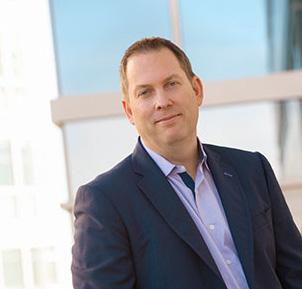

The Saudi EXIM Bank was established in 2020 to promote the export of Saudi non-oil products and boost their competency across economic sectors in the global markets. The Bank provides financing services, guarantees, and credit insurance with competitive advantages, to enhance
confidence in Saudi products. It is one of the supervised development funds and banks by the Saudi National Development Fund.
Through SAS Model Risk Management, partners are able to establish a centralised model inventory that supports a company’s internal policies and procedures across all business units. The robust infrastructure of the solution includes permissions, version control and data mining capabilities.
With SAS Model Risk Management, customers can effectively track model issues, concerns, challenges and remediation with a rigorous model review and validation process that satisfies regulatory principles and expectations. single source of model documentation consistently records the review and validation process, which can be examined at various levels, including model lineage, version, business line, model owner and more.
National Marine Dredging Company, a leading Engineering, Procurement, Construction and Marine Dredging group headquartered in Abu Dhabi, selected Oracle Fusion Cloud Applications Suite to enhance efficiency across various functions throughout its business operations.

By utilising a wide range of applications for finance, supply chain, HR, and customer service, the Group will be able to simplify and integrate critical business processes across verticals, to optimise spending, generate more insightful data, and better support its growing workforce.
With an aim to increase flexibility and standardise business processes on a single platform, NMDC Group chose Oracle Fusion Applications to replace its highly customised on-premises legacy Oracle business systems through implementing the progressive and innovative Oracle Fusion Cloud Enterprise Resource Planning ERP, Oracle Fusion Cloud Supply
Chain and Manufacturing SCM, Oracle Fusion Cloud Human Capital Management HCM, and Oracle Fusion Cloud Customer Experience CX. By creating a single platform, the Group is ideally positioned to capture growth opportunities in the UAE and in key regional markets, with strong capabilities across the value chain to support future expansion plans.

UAE based Acme Intralog has recorded a 22% increase in demand for the company’s warehousing automated solutions in the last two quarters, compared to the same period last year.
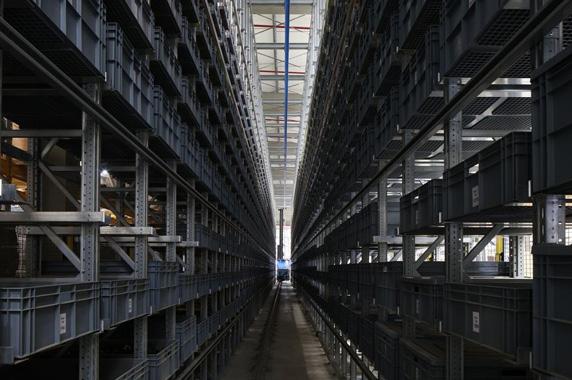
At the company’s manufacturing facility in Jebel Ali Free Zone, Acme manufactures a complete range of conveyor systems, AS, RS systems, control systems as well other material handling systems. They also design and manufacture customised factory automation solutions for a variety of industries in the region. Acme continues to make significant investment in R and D to develop competitive and innovative solutions.
Acme provides its customers with an end-to- end life cycle support
service that can be deployed both on-site as well as on an on-call basis. Acme’s team can help customers manage equipment maintenance, safety, and obsolescence management as well as training customer maintenance staff to safely maintain and improve machine and system longevity.


Injazat, announced winning a digital transformation project for TAQA Group, the recognized low carbon power and water champion from Abu Dhabi that is a top-10 integrated utilities company in the EMEA region. The contract was formalised during a signing ceremony with Ussama Dahabiyeh, the CEO of Injazat and Omar Al Hashmi, Executive Director of Transmission and Distribution,
Group.
TAQA selected Injazat from a pool of competitive international bidders to lay the groundwork for TAQA to become a digital utility through modernised IT infrastructure. The program’s workstreams will address risks, deliver new capabilities, and up-skill staff on new technologies. Injazat will also create long-term value for TAQA by optimising their systems and enhancing customer experience.
Infor announced that Mooneh, a third-party logistics storage and distribution provider operating on behalf of leading international pharmaceutical corporates, has deployed Infor WMS warehouse management system. In addition to establishing an efficient and effective warehouse operation, the solution is set to deliver full traceability of all inventories. The project was successfully delivered by SNS, a
leading provider of supply chain consultancy and software implementation.
With 100,000 sqm of temperature-controlled logistics infrastructure and storage capacity to allocate over 100,000 tons of FMCGs a year, including up to 22,000 pallets of pharmaceuticals and medical supplies, Mooneh provides fulfilment and logistics solutions.
As part of its objective to optimise warehouse operations, Mooneh’s project goals were two-fold. The first was focused on receiving, storing and shipping efficiently by fully utilising the warehouse space, while the second sought to minimise human intervention and travel time for optimised productivity. Infor WMS now manages Mooneh’s entire warehousing operation from receiving goods to storage and shipping.
As it looks to cement its position as a pioneer in the $50 billion low-code market, Kissflow unveiled its vision for seamless work manage-
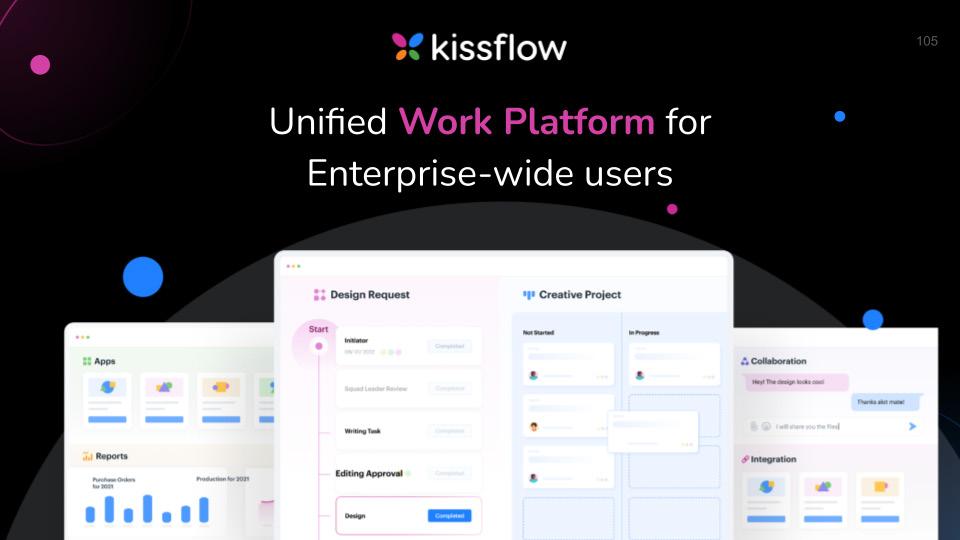
ment across all facets of the modern enterprise. The company has consolidated market-leading solutions across its portfolio – including its
low-code, no-code, process automation, collaboration, and analytics offerings – to deliver a unified low-code, no-code work platform that enables enterprises to fast-track digital transformation.
Kissflow’s new work platform consolidates capabilities for app development, process management, task management, case management, data management, integrations, analytics, and collaboration. It makes these easily consumable to end-users, teams, team managers, process experts, citizen developers and IT developers through the intuitive low-code, no-code model. This aligns with the company’s mission of democratising app development in the region to address the present and intensifying shortage of technical talent.
While Kissflow has designed its unified work platform to be industry-agnostic, in the Middle East, the company will focus on driving the solution’s uptake by enterprises in the banking and finance, retail, oil and gas, logistics and supply chain, healthcare, and manufacturing sectors.
Arab Financial Services, a digital payment solutions provider and fintech enabler in the Middle East and Africa, has relocated its UAE data centre operations to Equinix Dubai International Business Exchange IBX facilities in Dubai, known as DX1. AFS currently has data centres in Bahrain and UAE.

Through connecting to one of the prime commercial hubs for international business in the MENA region, AFS opens a vast range of international opportunities for its customers, enabling them to benefit from connections to major international payments companies and cloud providers such as AWS and Microsoft, which cements AFS’s reputation for delivering the best opportunities and highest quality payments experience for its customers.
The new Equinix data centre connection gives AFS’s regional payments processing business a secure and powerful global data centre platform for which to scale its operations with next-generation digital infrastructure.
Regulated by The Central Bank of Bahrain, and majority-owned by Bank ABC, AFS boasts numerous ground-breaking end-to-end digital
payment services and solutions. These span debit, credit, and Islamic card processing, merchant acquiring, fintech, and a suite of stateof-the-art value-added services. Providing the highest quality payments solutions that are trusted by businesses, AFS has offices and data centres in Bahrain, the UAE, and Oman.
Its dedication to innovation has positioned AFS as a driving market force delivering a rich portfolio of payment solutions including popular digital mobile wallets, market-leading merchant acquiring services, Bahrain’s leading digital payroll solution, global contact centres and more.
The Communications and Information Technology Commission has performed the first global live demo of an end-to-end AFC system
to enable WiFi 6E technology, which aims to enable outdoor WiFi 6E usage, in collaboration with HPE and Federated Wireless. This trial is

SAP and Ducati announced a global collaboration, that sees the Italian motorcycle manufacturer choose RISE with SAP to enable an important business transformation, covering key business processes. The collaboration is underpinned by a shared desire to improve and enrich the experiences of passionate Ducati customers through innovation excellence and cutting-edge products and services.
Technology and innovation are essential elements in Ducati’s DNA. With SAP, the Ital-
EMMANUEL RAPTOPOULOS
President, EMEA South SAP.a continuation of Saudi Arabia’s global leadership as the country with largest amount of license-exempt spectrum globally and the first country in Europe, Middle East and Africa to make the entire 6 GHz band license-exempt.
The demo is an important milestone for adopting the data-driven of spectrum smart management in Saudi Arabia as well as expanding the capabilities of WiFi 6E to enable the full realisation of the potential of WiFi technologies while protecting existing users in the band, in addition to expanding collaboration between the commission and its global partners.
The commission also seeks to adopt the latest spectrum management systems and technologies to further enhance the quality of wireless services such as public WiFi and enable the widespread adoption of WiFi 6E across Saudi Arabia.

These efforts are also a continuation of CITC’s global leadership in wireless technologies and WiFi 6E, in line with its mandate to support the digital transformation of KSA as its digital regulator.
ian company aims to be at the forefront, and its intent is to create an intelligent business network with suppliers and partners, extending the digitalisation of processes and enhancing the accuracy and timeliness of information. These are necessary steps as Ducati puts passionate customers at the centre of its business, and to respond effectively and efficiently to an increasingly complex global supply system.
To achieve these goals, Ducati will also adopt the SAP Commerce Cloud solution for Ducati’s online business management and SAP Integrated Business Planning IBP for agile supply chain planning, that will lead to an extended and integrated digital supply chain.
The collaboration between the two companies also extends to the world of racing, an area in which technological development and innovation have always been driven to excellence. SAP joins the Official Partners of the Ducati Lenovo Team in MotoGP for the 2022 season.
Use cyber crisis simulation tools for mock drills and training that provide closer to real-life situations for preparedness of end users against ransomware.
terms of tools, processes and skills to defend against attacks.
27% of malware incidents reported in 2020 can be attributed to ransomware. Ransomware — cyber extortion that occurs when malicious software infiltrates computer systems and encrypts data, holding it hostage until the victim pays a ransom — can have a bigger impact on an organisation than a data breach.
In the short term, ransomware can cost companies millions of dollars, and a potentially even greater loss over the long term, impacting reputation and reliability. From top healthcare providers and retailers in the US to insurance providers in the Middle East, ransomware attackers are proving to be a continuing cybersecurity threat.
In some recent cases of ransomware attacks, the victim organisations have paid huge amounts to the attackers, which can be one of the reasons these attacks are getting more popular. Instead, what organisations need to focus on is preparation and early mitigation if they want to cut losses to ransomware.
CISOs and security leaders can reduce the likelihood of ransomware attacks, reduce exposure to vulnerabilities and secure the organisation using a mitigation plan. This plan must cover the following six actions.
Conduct risk assessments and penetration tests to determine the attack surface and current state of security resilience and preparedness in
Before you assume that payment is the only option, investigate using free ransomware decryption software.
Establish processes and compliance procedures that involve key decision makers in the organisation, even before preparing for the technical response to a ransomware attack. Ransomware can escalate from an issue to a crisis in no time, costing an organisation revenue loss and creating a damaged reputation.
Key people such as the CEO, board of directors and other important stakeholders must be involved in the preparation. In the event of a ransomware attack, it is likely that journalists and other external stakeholders will reach out to the board of directors for response to the attack, not the security leaders or CISO.
Conduct frequent exercises and drills to ensure that systems are always able to detect ransomware attacks. Build regular testing of incident response scenarios into the ransomware response plan.
Test, test and retest at regular intervals to check for vulnerabilities, noncompliant systems and misconfigurations. Ensure that incident response processes are not themselves reliant on IT systems that may be affected by ransomware attacks or unavailable in case of a serious incident.
Back up not only the data but also every nonstandard application and its supporting IT infrastructure. Maintain frequent and reliable backup and recovery capabilities. If online backups are used, ensure that they cannot become encrypted by ransomware. Harden the components of enterprise backup and recovery infrastructure against attacks by routinely examining backup application, storage and network access and comparing this against expected or baseline activity.
Prepare for critical application recovery in a systemwide ransomware attack by creating specific recovery time objective RTO and recovery point objective RPO parameters, safeguarding backup storage media and accessibility.
Restrict permissions and deny unauthorised access to devices. Remove local administrator rights from end users and block application installation by standard users, replacing this
permissions and deny unauthorised access to devices

with a centrally managed software distribution facility. CISOs and security leaders must deploy multifactor authentication wherever possible, especially for privileged accounts. Increase authentication logging on all critical servers, network appliances and directory services, and ensure logs are not deleted. Notify security operations teams of any unexpected activity and ensure they proactively look for unusual logins, failed authentication attempts.
#6 Train users on response
Research government and regional authorities that have provided guidelines on how organisations can fortify their network infrastructure against ransomware. CISOs and security leaders can use guidelines such as these to create a basic training programme for all staff in the organisation. However, ransomware preparedness training needs to be customised to the organisation for better results.
Use cyber crisis simulation tools for mock drills and training that provide closer to real-life situations for better preparedness of end users against ransomware.
The challenges of ransomware and other forms of malware are the ever-changing tactics and agendas of hackers. Having a strategy in place for preparedness can help contain the losses and protect the organisation. ë
preparedness training needs to be customised to the organisation for better results
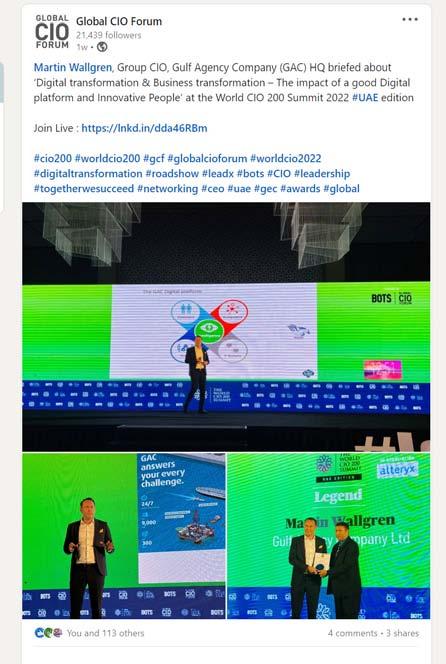
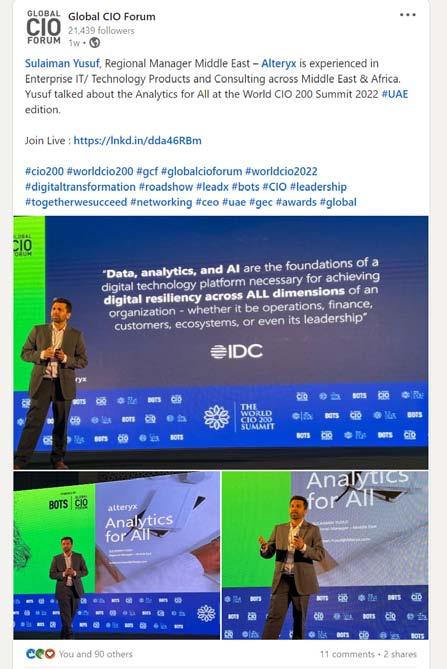
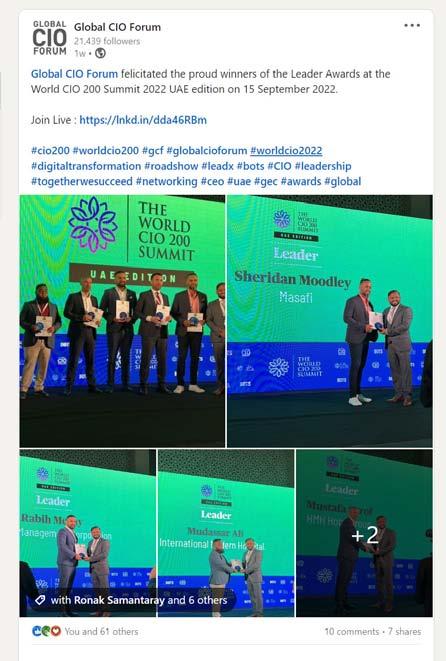



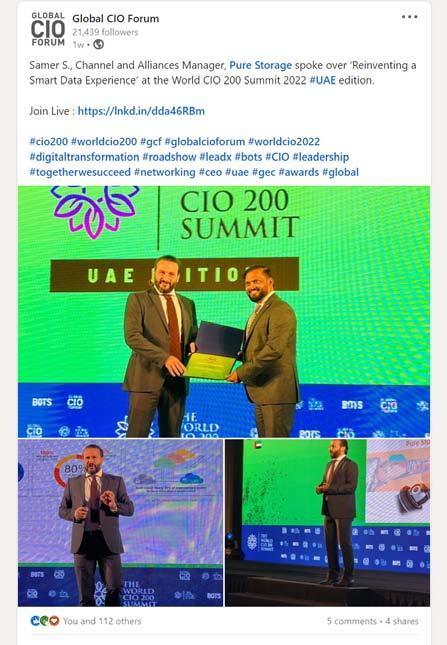


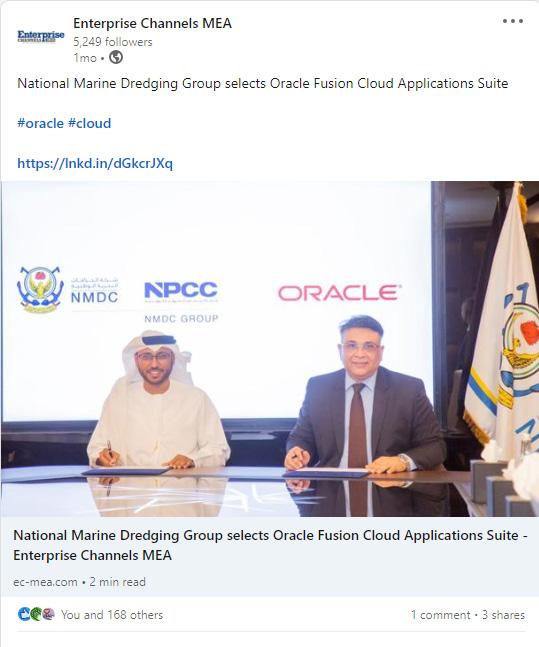
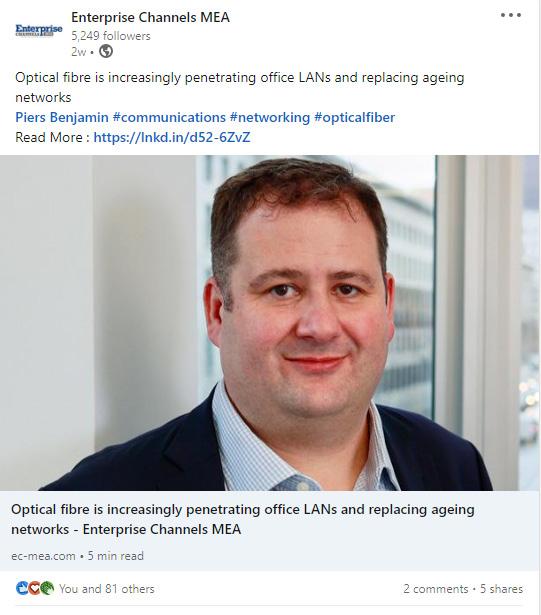

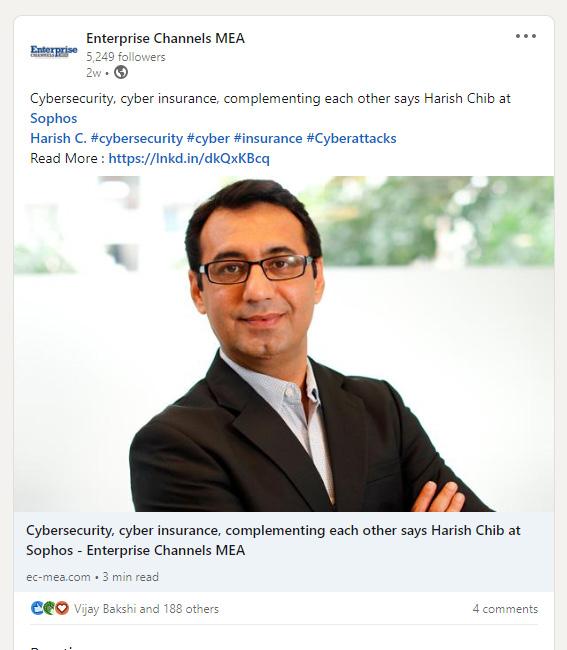
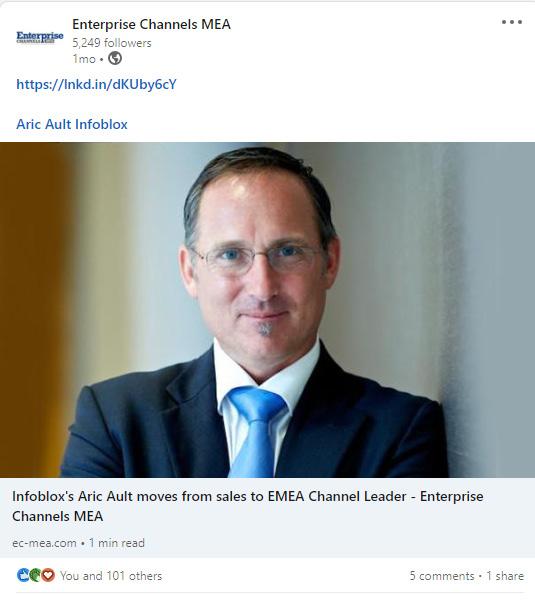

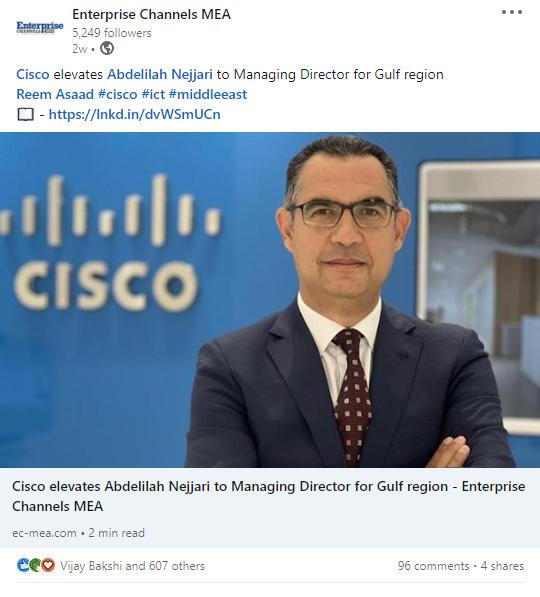
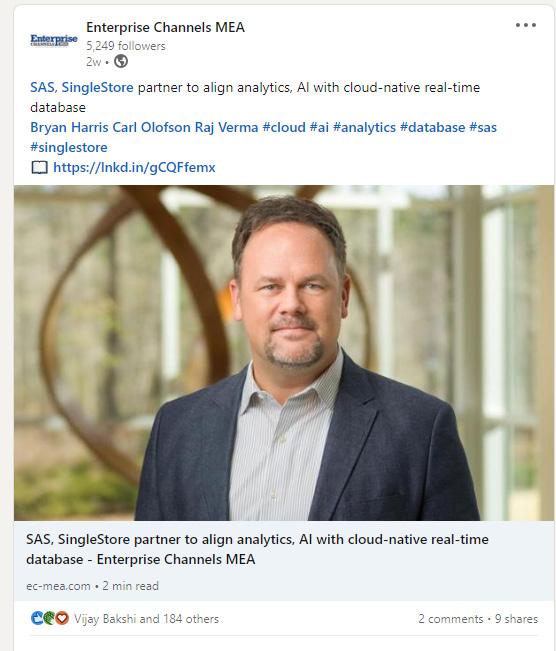

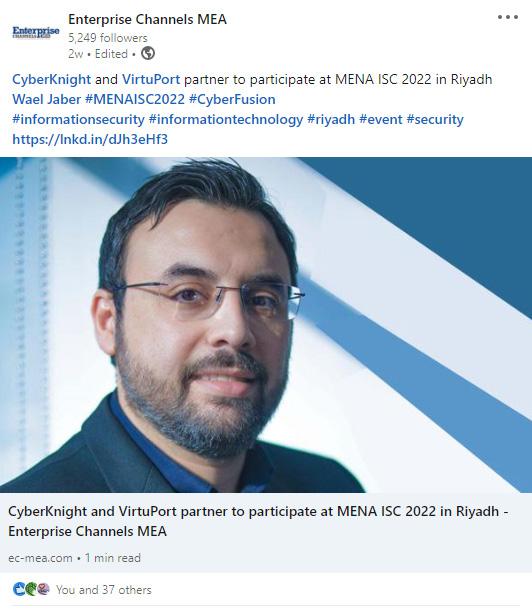
Dragos, announced appointment of Omar Al Barghouthi as Regional Director, Middle East. In his new role, Al Barghouthi will be responsible for spearheading Dragos’ regional growth, strengthening its partner network, and consolidating the company’s leadership role in providing security solutions through the Dragos Platform for the Middle East’s rapidly growing industrial sector.
Al Barghouthi comes to Dragos from IBM Middle East, where he served as Cybersecurity Sales Director for regions including the Middle East, Levant, and Pakistan. Previously he held a series of roles in strategy, business development and service delivery in private and public sector organisations including Injazat Data Systems, Dubai World and Ajman Government.
Hive Pro has appointed Pierre Noel as its new Chief Information Security Officer with the vision of supporting growth in the company. He is an industry veteran and comes with 3 decades of work experience. He has been a CISO for two fortune 100 companies as well as unicorn and several start-ups. The organisations he has worked with are diverse in nature, including, IBM, Microsoft, KPMG and Huawei Technologies, to name a few.

Organisations need to gain better visibility and control over an increasingly diverse set of exposures and risks. Security operations technologies and concepts must enable this greater visibility and control. In such a dynamic global environment, the CISO role has become more vital than ever. Pierre has led cybersecurity practices at large enterprises and Hive Pro customers can leverage from the breadth and depth of Pierre’s experience as he will assist and guide enterprises to go beyond legacy technology to mitigate cyber risk.
Hewlett Packard Enterprise announced that Savio Ibrahim has been appointed as Country Manager for Qatar. Savio is responsible for delivering unique, open and intelligent technology solutions as a service, with offerings spanning Cloud Services, Compute, High Performance Computing and AI, Intelligent Edge, Software, and Storage. He is tasked with driving further growth and maintaining high levels of customer and partner satisfaction. Savio reports into Raif Abou Diab, the Managing Director for the Egypt, Qatar and Levant region.
Prior to taking up his new role, Savio was Sales Manager and Channel Leader for the Egypt, Qatar and Levant region. Savio joined HPE in 2014 as a senior account manager in Lebanon. After excelling in this role, he was promoted to Territory Channel Manager covering Lebanon and Iraq. In 2018, he was assigned a new Sales Manager role across the Gulf and Levant region. Throughout his time with HPE, Savio has built successful sales models, developed relationships with partners and customers, and delivered consistent growth.



Gulf Business Machines announced appointment of Ossama El Samadoni as General Manager for United Computer and Management Consultancy Company, its Dubai operations. In his new role, El Samadoni will be responsible for leading GBM’s Dubai teams as they help enterprises to unlock new business value, support government authorities to develop national capabilities, and strengthen partnerships across the technology ecosystem.
He joins GBM from G42, where El Samadoni was most recently the VP of Business Development and Sales, responsible for accelerating its cloud division as well as driving the long-term strategies for the department.
Savio is a Computer and Communications Engineer with a master’s degree in Network and Communications. He holds an International MBA in Enterprise Management from Paris Dauphine and Paris 1 Panthéon Sorbonne in France. Savio is experienced in sales management, channel development, and developing business growth strategies. He is an accomplished, result driven sales professional with over 14 years of both technical and sales experience.
 HPE elevates Savio Ibrahim to Country Manager for Qatar
Omar Al Barghouthi moves from IBM, joins Dragos as Regional Director, Middle East
Ossama El Samadoni moves from G42, joins GBM as General Manager Dubai operations
HPE elevates Savio Ibrahim to Country Manager for Qatar
Omar Al Barghouthi moves from IBM, joins Dragos as Regional Director, Middle East
Ossama El Samadoni moves from G42, joins GBM as General Manager Dubai operations
G42 Cloud; a UAE-based cloud computing provider, subsidiary of G42, an Abu Dhabi based AI and cloud computing company, announced a new addition to its executive leadership team with Adrian Hobbs confirmed as its Chief Platform Officer. In this newly created role, Adrian will report to G42 Cloud’s Chief Executive Officer, Talal Al Kaissi.
This appointment helps to usher in the organisation’s next growth phase as enterprise cloudadoption rapidly accelerates and with G42 Cloud offering a game-changing market proposition.
Adrian brings over 20 years of cross-industry experience to the role. He previously led multiple large-scale digital, cloud and technology transformations across Australia and the UAE. Adrian joins G42 Cloud from Emirates NBD in Dubai where he was part of the major banking group’s IT leadership team and helped pioneer an AED 1 billion digital transformation.
Infoblox promotes Aric Ault to lead its Channel Sales organisation across EMEA. Previously, he served as Senior Director of Sales for Northern Europe. In his new role, Ault is responsible for growing Infoblox’s channel opportunities in the highly dynamic EMEA market.

Prior to Infoblox, Ault held various leadership positions at Cisco and FWI, among other companies, where he was responsible for the development and growth of the channel and strengthening the collaboration with partners.
Cohesity, announced appointment of Sanjay Poonen as CEO and President. He will also join the Cohesity Board of Directors. Poonen was formerly Chief Operating Officer of VMware and President of SAP. Mohit Aron, who has been CEO since founding the company in 2013, will accelerate Cohesity’s product innovation and roadmap as Founder and Chief Technology and Product Officer.

Aron will continue to lead the company’s research and development R&D, support and services, as well as the Office of the CTO. He will remain on the Cohesity Board of Directors.
In his most recent role as COO of VMware, Poonen oversaw sales, marketing, services, and alliances and played a key role in doubling revenues from approximately $6B to $12B. Poonen also played a vital role in architecting multiple successful cloud partnerships, including AWS, Microsoft, Google, and Oracle.
He led the company’s security and end-user computing businesses, including the acquisition of AirWatch and Carbon Black. Prior to VMware, Poonen served as President of SAP where he led SAP’s Applications, Industries, and Platform teams, serving in engineering and sales roles that helped double SAP revenues from approximately $10B to $20B.
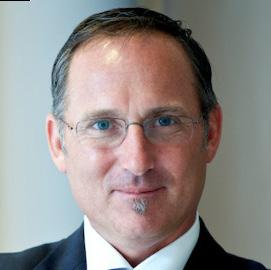
Cisco announced appointment of Abdelilah Nejjari as the new Managing Director for the Gulf region. Based in Dubai, he will oversee all the company’s operations across the UAE, Qatar, Kuwait, Oman, Bahrain, Yemen, Pakistan, and Afghanistan.

Abdelilah will be responsible for driving Cisco’s business growth and strategy, focusing on accelerating digital transformation for customers across the Gulf region, and working closely with Cisco’s partner ecosystem. Abdelilah brings over two decades of diverse experience in ICT and executive leadership to the role, including more than fifteen years with Cisco.
Most recently, he held the position of Cisco’s Partner Lead and Chief Operating Officer for Middle East and Africa, overseeing planning and executing Cisco’s operational policies, go-to-market strategies, and priorities in the region. He was also responsible for strengthening and nurturing Cisco’s relationship with its growing partner ecosystem.
Adrian Hobbs joins G42 Cloud from Emirates NBD as Chief Platform Officer Infoblox’s Aric Ault moves from sales to EMEA Channel Leader Former VMware COO, Sanjay Poonen joins Cohesity as CEO and PresidentLenovo has announced the appointment of Wael Mustafa as the new Country Manager for the Gulf region within Lenovo Infrastructure Solutions Group. In his new leadership role, Wael will be responsible for delivering market solutions to regional organisations in both private and public sectors. He will also support customers with insights into IT, Digital Transformation and Lenovo’s smart data centre solutions.
Wael is a strong business leader, bringing with him more than 25 years of experience with leading technology companies. He has an in-depth understanding of the IT industry, matched with his commitment towards sales and channels excellence. He comes to Lenovo ISG from Commvault, where he was the Area Vice President for the Middle East, Turkey, and Africa regions. Prior to that, he also worked with Zain and Dell EMC, which laid the foundations for his passion in sales.
Vectra announced two new appointments to its EMEA leadership team. The announcement sees Teppo Halonen appointed as Vice President of EMEA, and Christian Borst named as Chief Technical Officer of EMEA. Vectra’s new EMEA leadership team will work closely with customers and partners to develop security strategies and assist them with securing digital transformation and cloud adoption projects.
Teppo Halonen moves from his previous role at Vectra as Regional Director for North Europe, a position he has held since June 2020.

Christian Borst boasts an extensive background in cybersecurity and joins Vectra as Chief Technical Officer for EMEA, he will become Vectra’s second EMEA CTO, working alongside existing EMEA CTO Steve Cottrell. Christian previously worked as Senior Manager and Head of Cyber Offense for European management consulting firm AWK Group after leading the cyber resilience strategy at the Richemont Group – owner of Cartier and other luxury brands.
Christian is a Senior Fellow of the Bocconi Business School Corporate Information Security Roundtable and will build on his expertise to foster strong relationships within the cybersecurity community.


Delinea, announced it has appointed Mohammad Ismail as its new Regional Director for the Middle East. In his new role, Ismail will lead Delinea’s regional sales and channel teams to further strengthen the company’s positioning and increase market share.

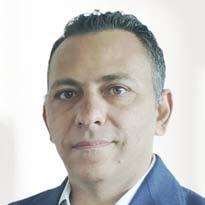
At the end of May, the company announced strong results for Q1 2022, with growth in annual recurring revenue ARR in excess of 35% and over 340 new logos added during the quarter. The results demonstrate Delinea’s ability to execute its mission and quickly respond to constantly changing customer needs as they advance in their digital transformation journeys.
Ismail, a business leader with substantial expertise in growing market shares for IT companies with international footprints and global outreach, has over 22 years of experience in the US, Middle East, Africa, and Southeast Asia. Prior to Delinea, he served as the Vice President of sales at Shifra where he played a lead role in accelerating the company’s growth.
Forescout Technologies, announced appointment of Rik Ferguson as VP of Security Intelligence. With a career spanning more than 25 years, including 15 years as VP of Threat Research at Trend Micro, Rik is a stalwart of the cybersecurity world. Rik is a researcher, storyteller, and futurist, helping governments, law enforcement, businesses and individuals understand the complexities of technology and its intersection with cybercrime.
He has taken deep dives into the cybercriminal underground and helped the wider world understand the threats of today and explored how those threats will change over time.
In the early stages of his career, Ismail worked for global technology companies such as Nortel Networks, Schlumberger, Check Point, and Utimaco. He also led the Identity and Access Management business for Gemalto across the META.
Mohammad Ismail moves from Shifra to Delinea as Regional Director, Middle East Wael Mustafa moves from Commvault to Lenovo Infrastructure as Country Manager Gulf region Trend Micro, Europol veteran Rik Ferguson moves to Forescout as VP Security IntelligenceAUGUST-NOVEMBER 2022
23rd NOV 2022
THAILAND
WHERE TECHNOLOGY IS BORDERLESS, AMBITIONS ARE FEARLESS, AND LEADERSHIP IS LIMITLESS

10TH OCT 2022

LOCATION: SHANGRI-LA DUBAI, SHEIKH ZAYED ROAD, DUBAI-UAE
VENUE: AL NOJOOM BALLROOM

FOR MORE VISIT
WWW.EC-MEA.COM/GEC-AWARDS-2022/